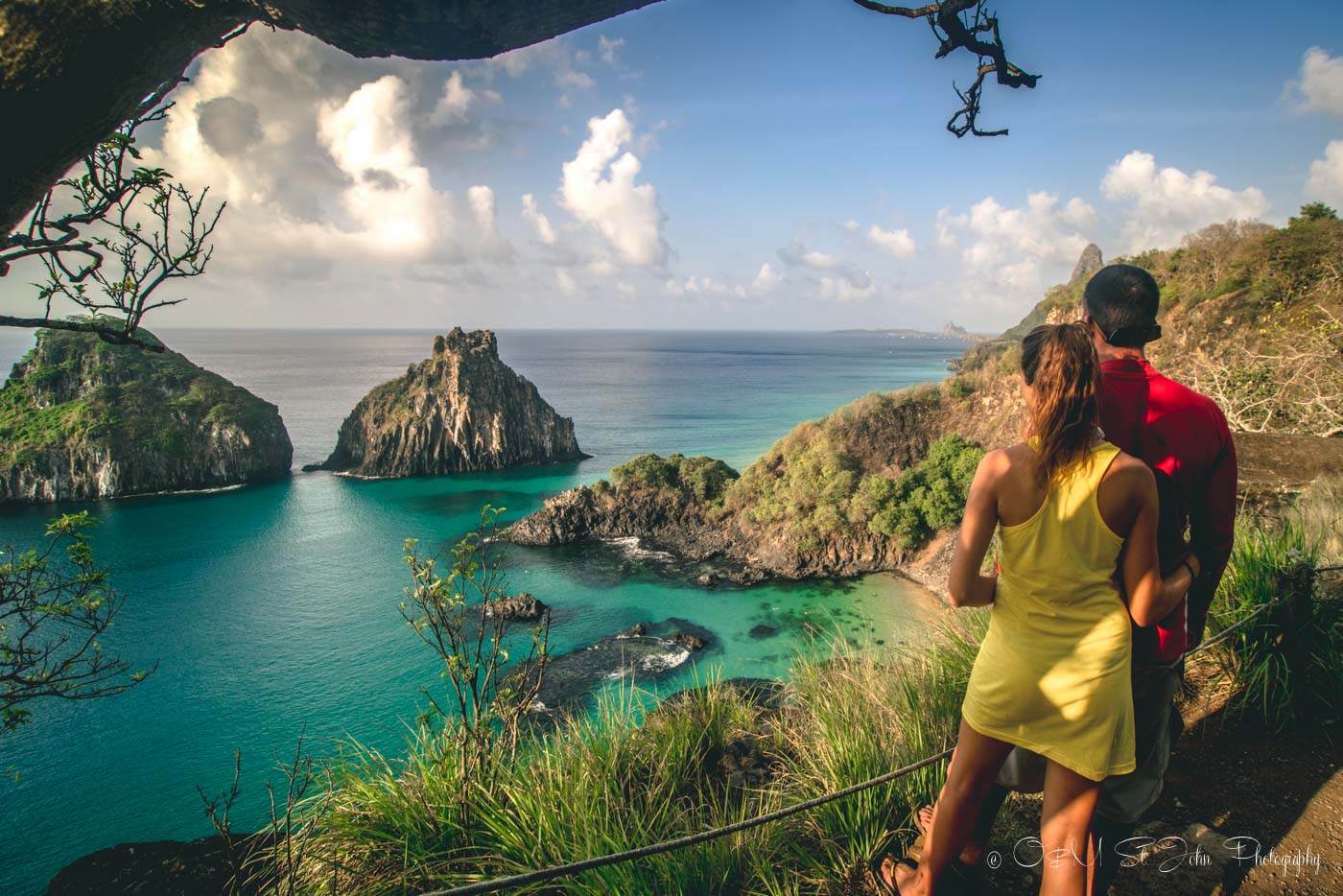Positioned off the Pacific Coast of Ecuador in South America, the extraordinary Galapagos Islands had been created tens of millions of years in the past by the fires deep throughout the Earth’s core.
Because of the archipelago’s distant location and strategic place within the Pacific Ocean, the islands grew to become a distinctive habitat for birds, mammals, and thriving marine life. For hundreds of years, the biodiversity of the Galapagos wildlife has developed with out human interference or pure predators.
In the present day, the Galapagos Islands are dwelling to a plethora of species, starting from birds to mammals. Lots of them are endemic species, discovered solely within the Galapagos. In actual fact, about 80% of chook species and 97% of reptiles and mammals are endemic animals on the Galapagos Islands. The Galapagos animals needed to adapt to the islands’ harsh situations and in flip, developed into distinct subspecies. Many of those distinctive Galapagos animals performed a key function within the conception of Charles Darwin’s Principle of Pure Choice and Evolution.
We had been so fortunate to identify many of those superb creatures on our current journey to the Galapagos Islands with Oniric Cruises. We acquired an opportunity to {photograph} them in all of their magnificence and to be taught a lot about them from our Galapagos naturalist information, Jaime.
Hope you get pleasure from this picture essay together with some details about the 18 distinctive animals discovered on the Galapagos Islands.
Animals of Galapagos Islands
Mammals
Galapagos Sea Lion
Standing: Endangered
Endemic to Galapagos: Sure
The place to See: Scattered alongside the coasts of the archipelago
Galapagos sea lions are the most considerable marine animal within the archipelago and have grow to be iconic Galapagos Islands species. You received’t must look arduous to search out them. They’re typically splashing within the water or sunning themselves on the rocks and seashores alongside the shoreline or typically, in much less pure locations.
They’ll “gallop” exceptionally quick throughout land and are identified to carry their breath underwater for greater than 10 minutes.
Each sexes of sea lions are comparatively giant, with males being distinctively bigger than females. Males even have a outstanding bump on their brow and have a tendency to get territorial and even aggressive throughout mating season.
 A sea lion posing for an image on Fernandina Island
A sea lion posing for an image on Fernandina Island

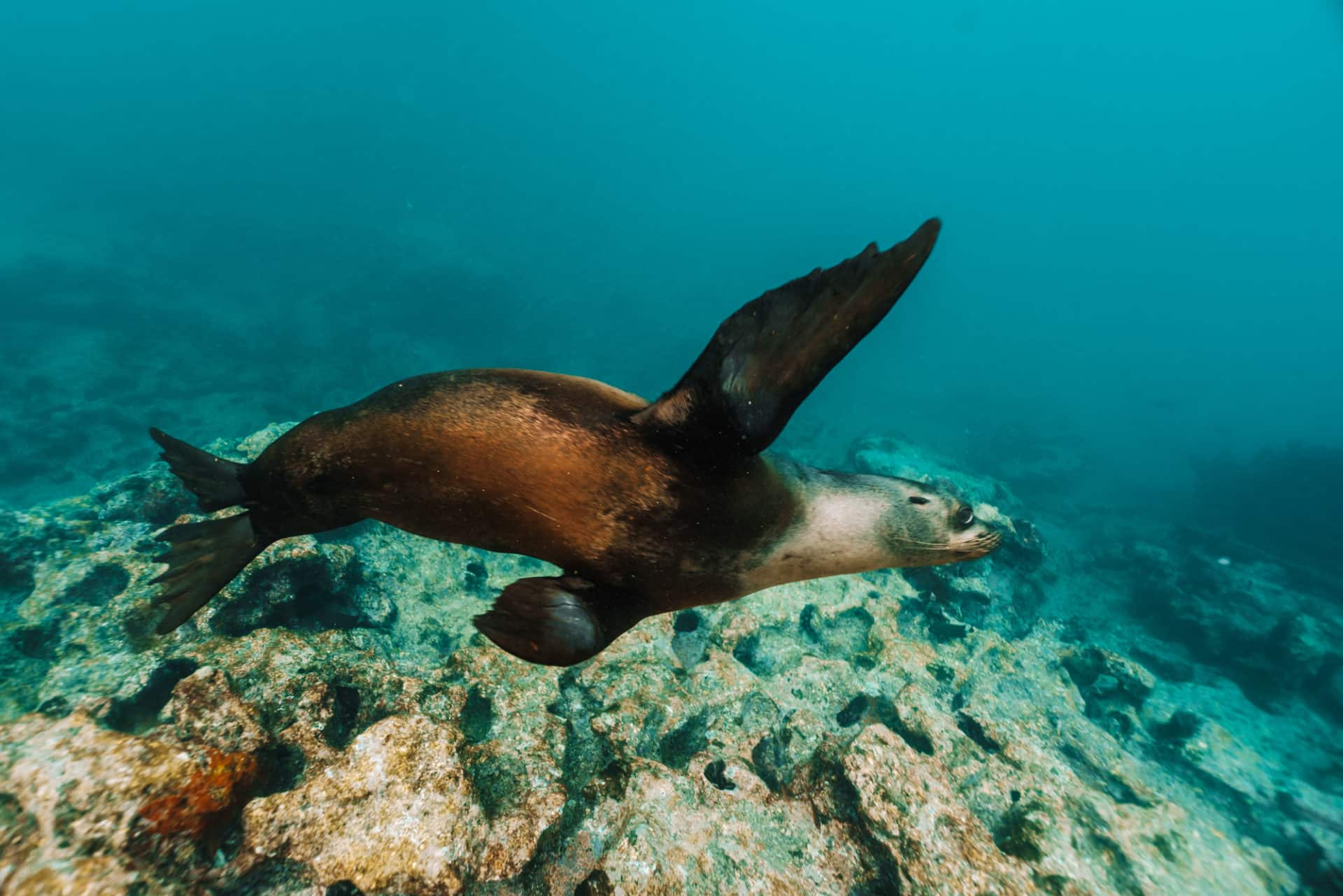 Sea lion within the waters of the Galapagos
Sea lion within the waters of the Galapagos
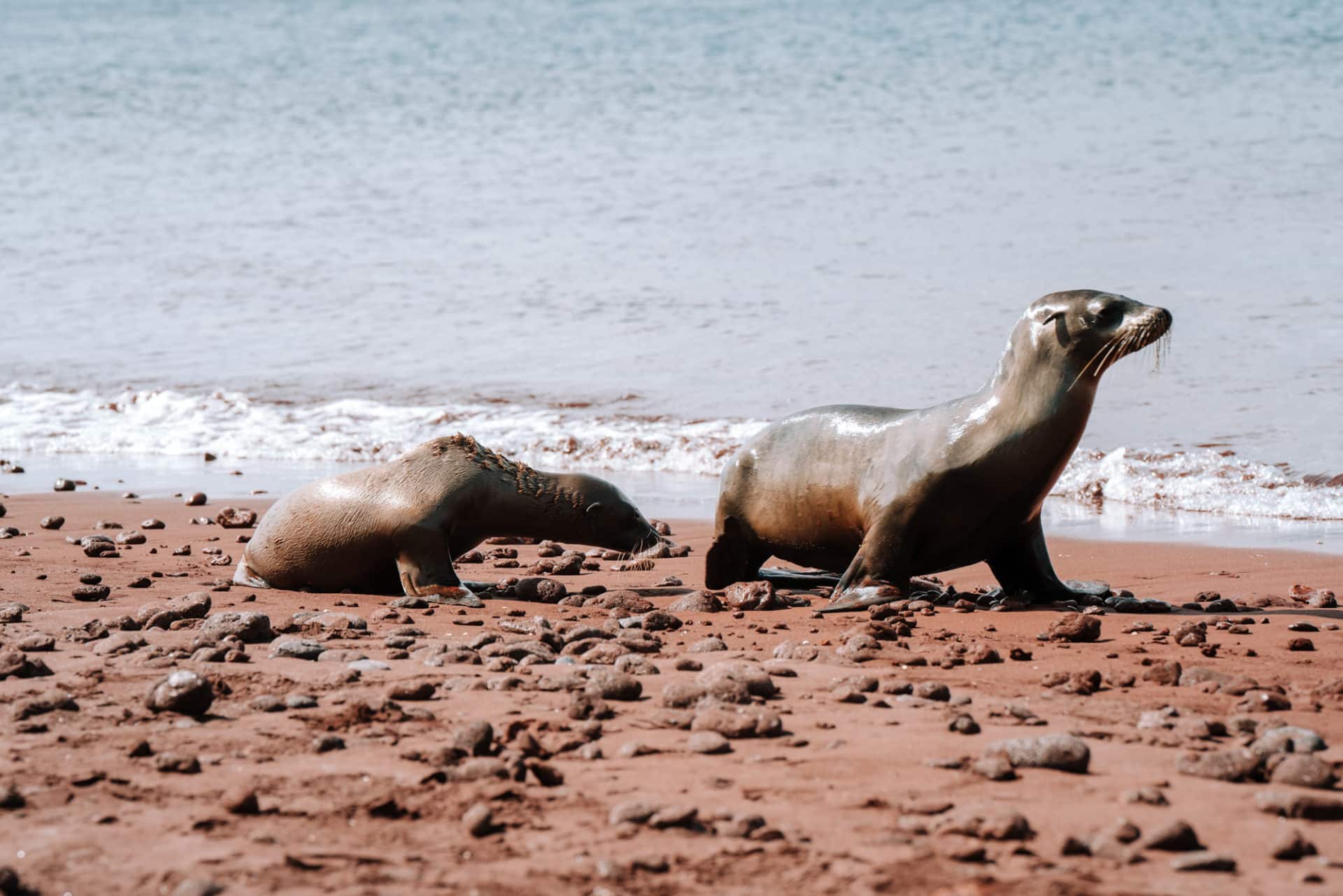 Sea lions on the shore on Rabida Island
Sea lions on the shore on Rabida Island
 Galapagos sea lions on San Cristobal Island
Galapagos sea lions on San Cristobal Island
 A bunch of lazy sea lions catching the mid day rays aboard a fishing boat on San Cristobal Island.
A bunch of lazy sea lions catching the mid day rays aboard a fishing boat on San Cristobal Island.
Galapagos Fur Seal
Standing: Endangered
Endemic to Galapagos: Sure
The place to See: James Bay (Santiago Island), Darwin Bay (Genovesa Island)
Galapagos fur seal is certainly extra distinctive and uncommon to see within the Galapagos. Because of their thicker fur, they like to lounge on the rocky terrain of the Galapagos’ western islands.
Fur seals are a smaller and fuzzier relative of the Galapagos sea lion. They’re much less social than sea lions and like shadier areas, like lava crevices.
They dwell in giant colonies and are wonderful nocturnal hunters due to their huge eyes. Fur seals feed on squid and small fish, making them susceptible to excessive climate occasions. Together with sea lions, they’re thought-about endangered and have very low reproductive charges, bearing just one pup at a time.
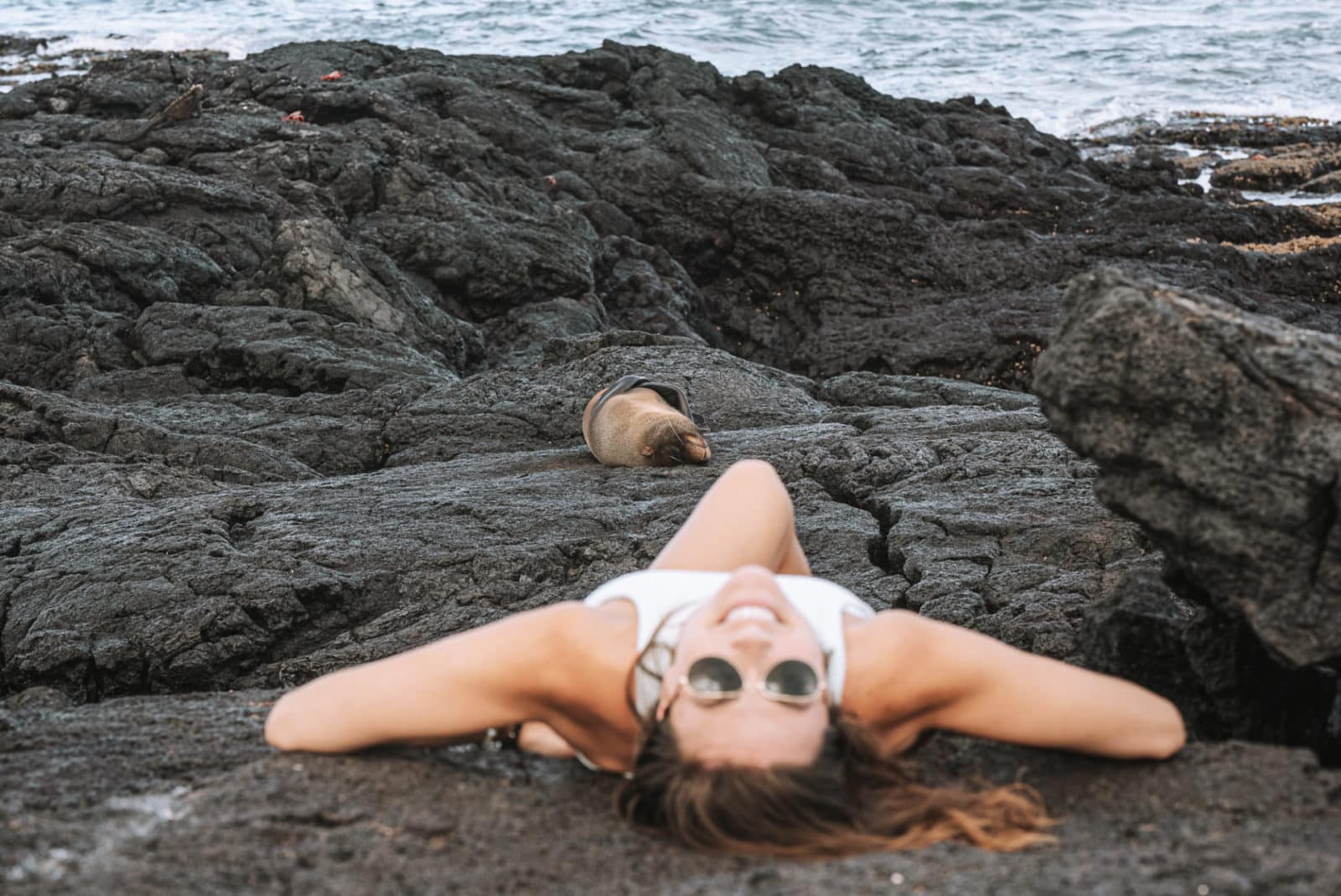 Posing with the Galapagos fur seal at Puerto Egas, Santiago Island
Posing with the Galapagos fur seal at Puerto Egas, Santiago Island
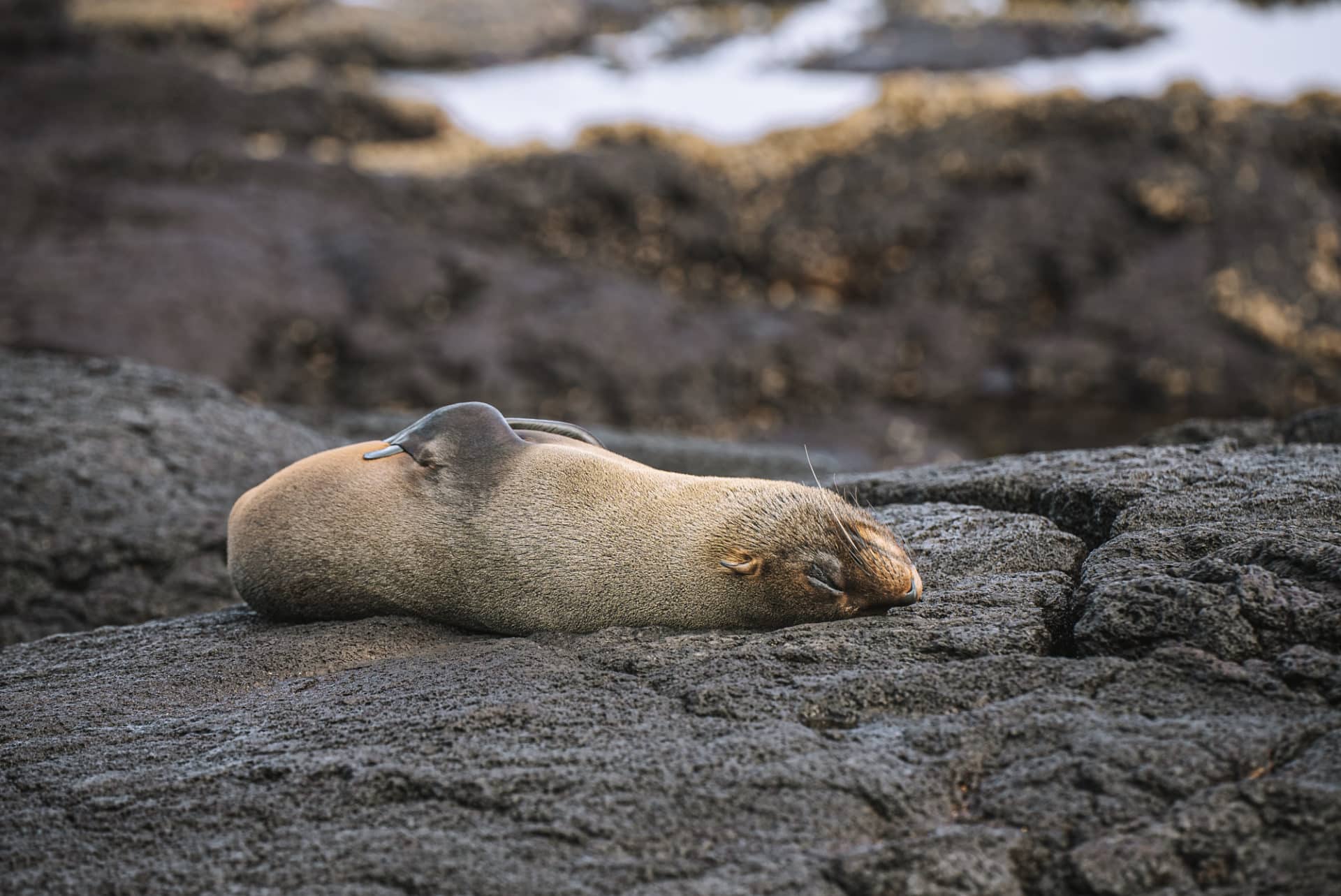
Reptiles
Marine Iguana
Standing: Susceptible
Endemic to Galapagos: Sure
The place to See: Isabela, Fernandina, Española, Floreana, and Santa Cruz
The Galapagos marine iguana is a tremendous instance of adaptability. It’s the solely species of lizard on earth that may dwell and forage at sea and adapt its physique measurement based mostly on meals provide. They spend their days sunbathing on the seashores or lava rocks, in an try to boost their physique temperature earlier than heading underwater.
There are 11 subspecies of Galapagos marine iguanas that adjust in color and measurement. Massive black marine iguanas are sometimes noticed on Isabela and Fernandina Island. Brightly colored adults are extra frequent on Española and Floreana islands. They’re identified to huddle in teams at night time to preserve warmth and are particularly energetic throughout mating season.
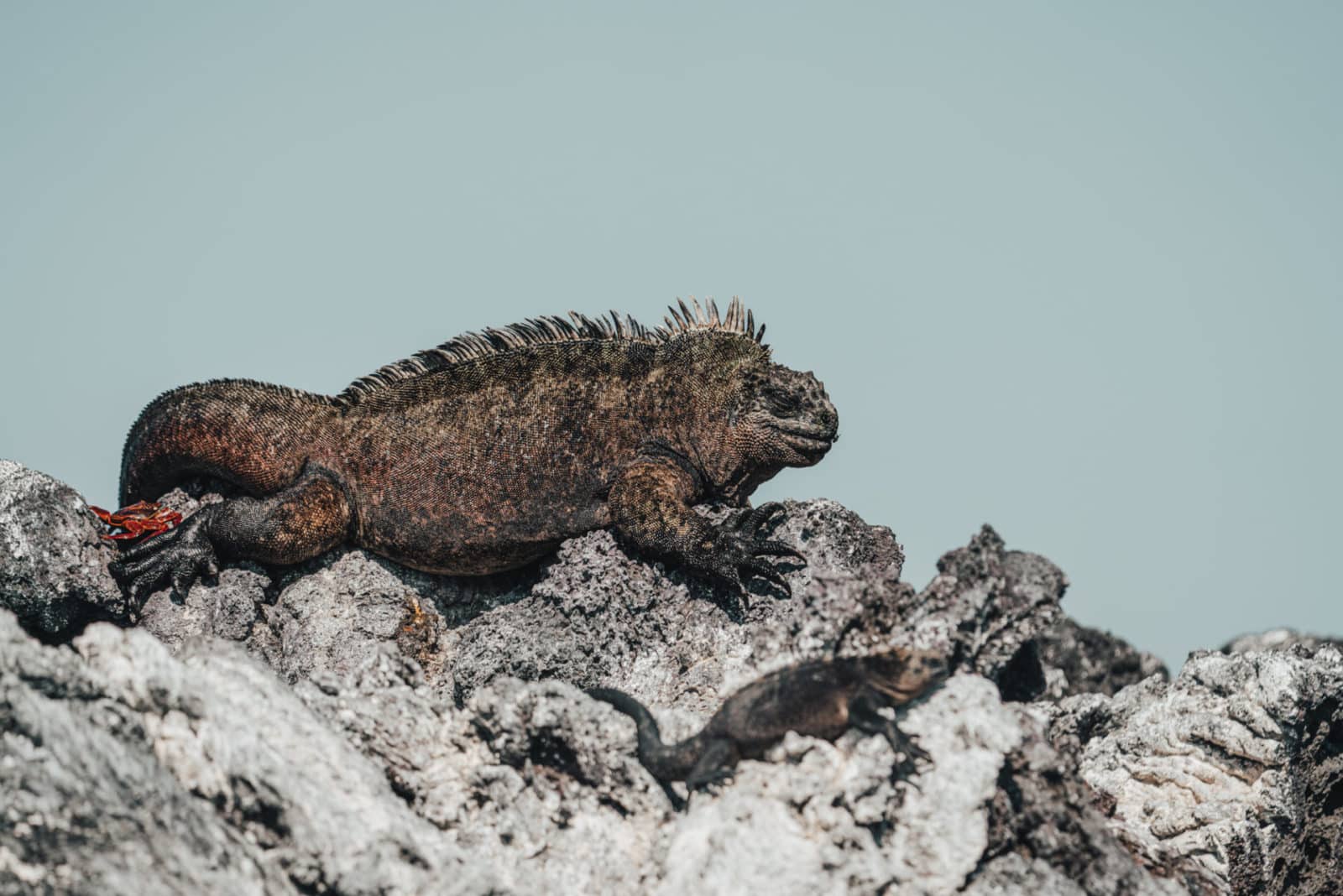
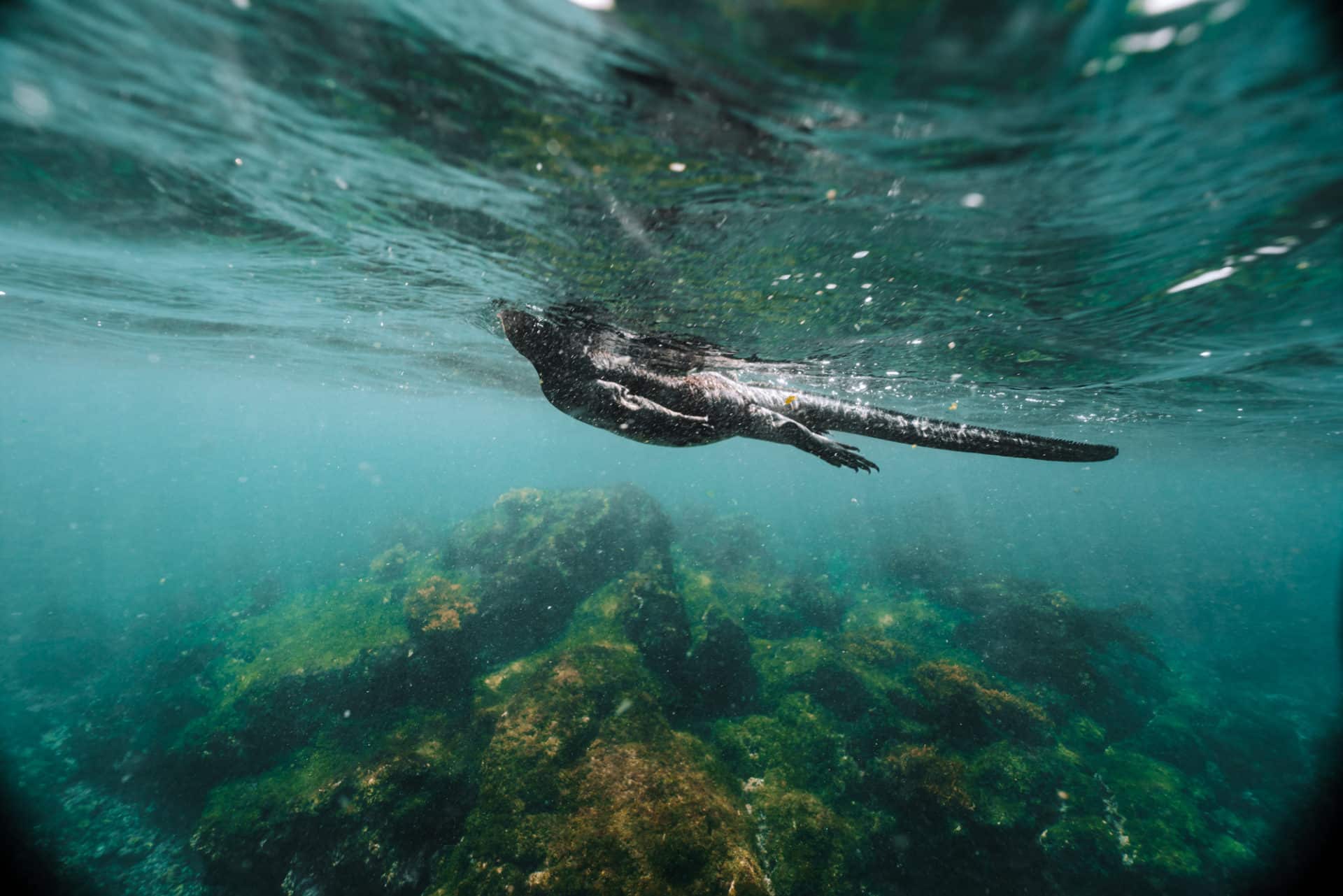 Marine iguana in motion
Marine iguana in motion
 A multitude of marine iguanas on Fernandina Island
A multitude of marine iguanas on Fernandina Island
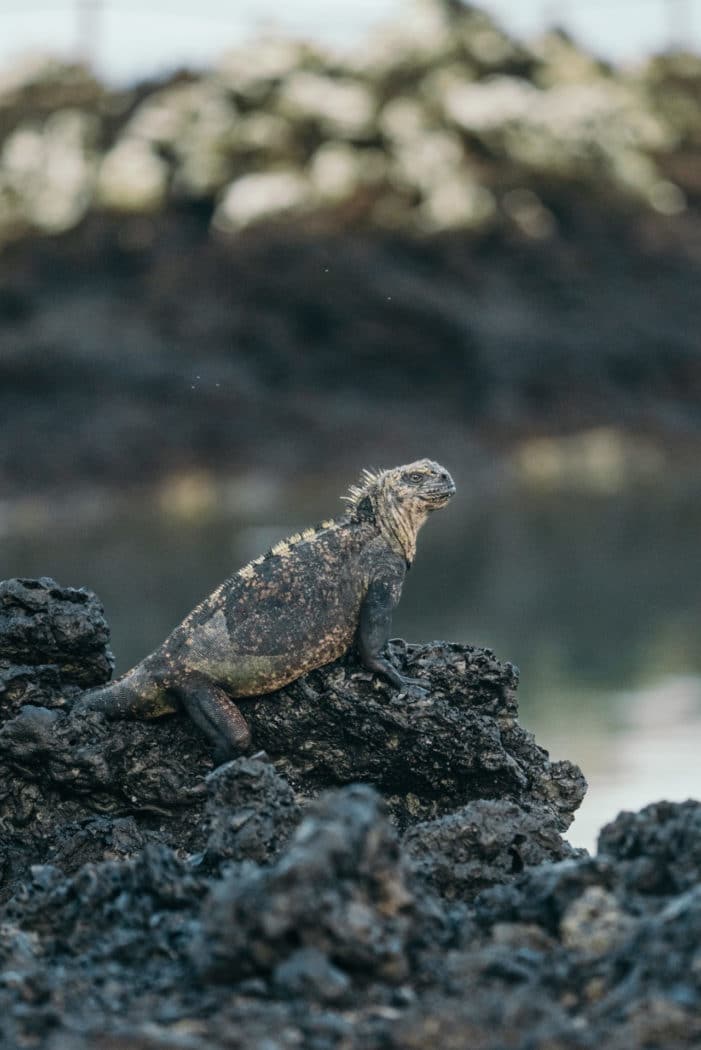
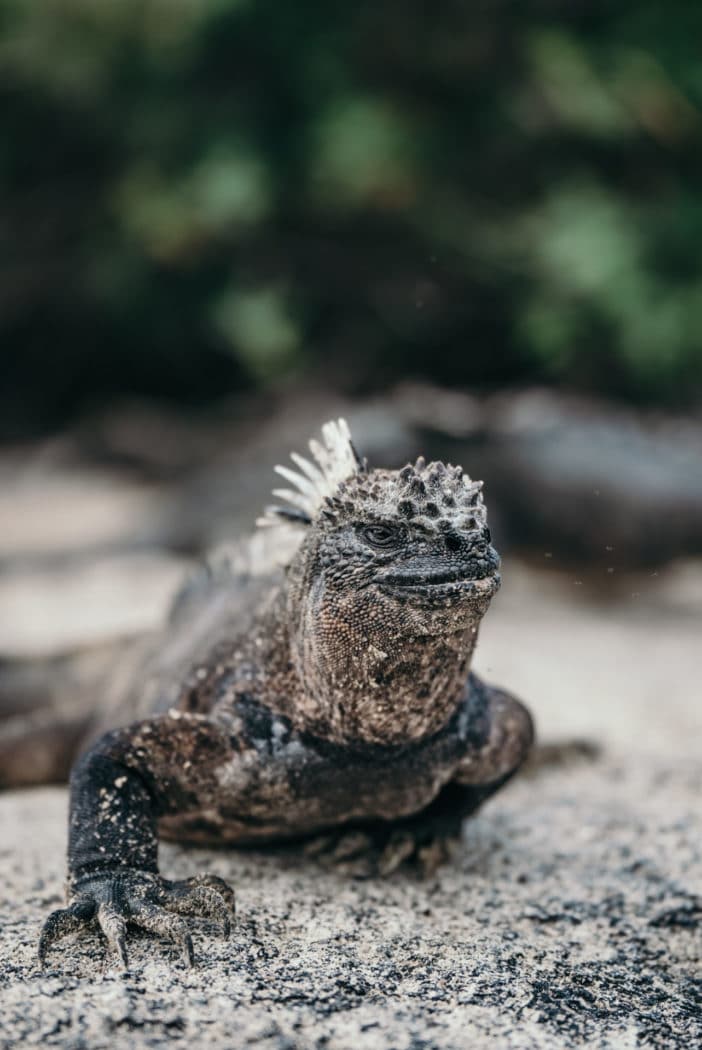
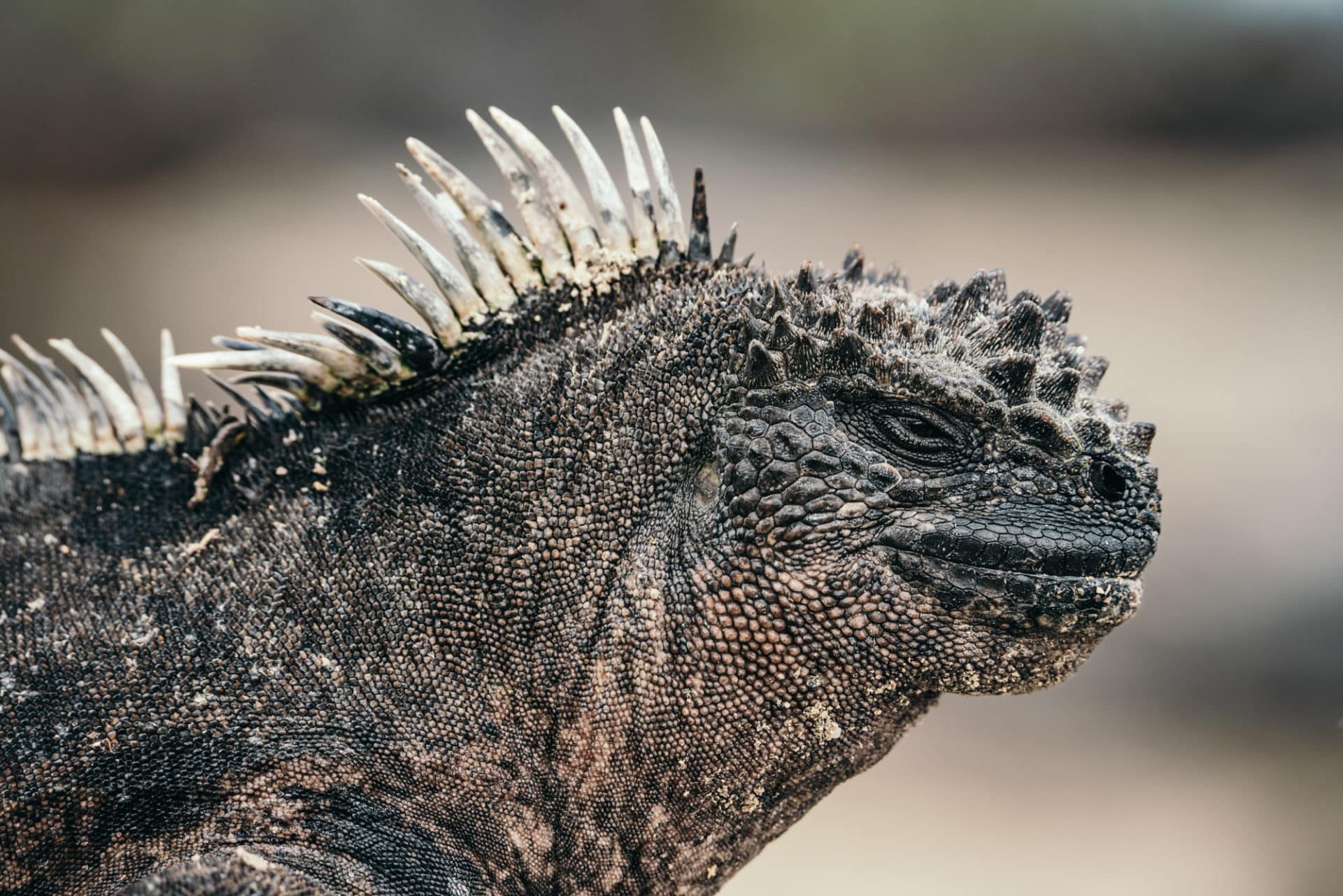
Land Iguana
Standing: Susceptible
Endemic to Galapagos: Sure
The place to See: Fernandina, Isabela, Santa Cruz, South Plaza, Baltra, Santiago, and North Seymour island.
Like marine iguanas, land iguanas are endemic to the Galapagos. In actual fact, marine iguanas are descendants of land iguanas that had been displaced within the Galapagos Islands in excessive climate.
There are three species of land iguanas on the archipelago, together with the yellow Galapagos land iguana, Santa Fé land iguana, and pink Galapagos iguana.
Land iguanas are giant, cold-blooded reptiles that feed on vegetation and dwell in dry areas away from the water. The previous two are susceptible whereas the pink land iguana is likely one of the islands’ critically endangered species. Yow will discover land iguanas on many islands within the Galapagos however the pink iguana is exclusive to the slopes of Wolf Volcano on Isabela Island.
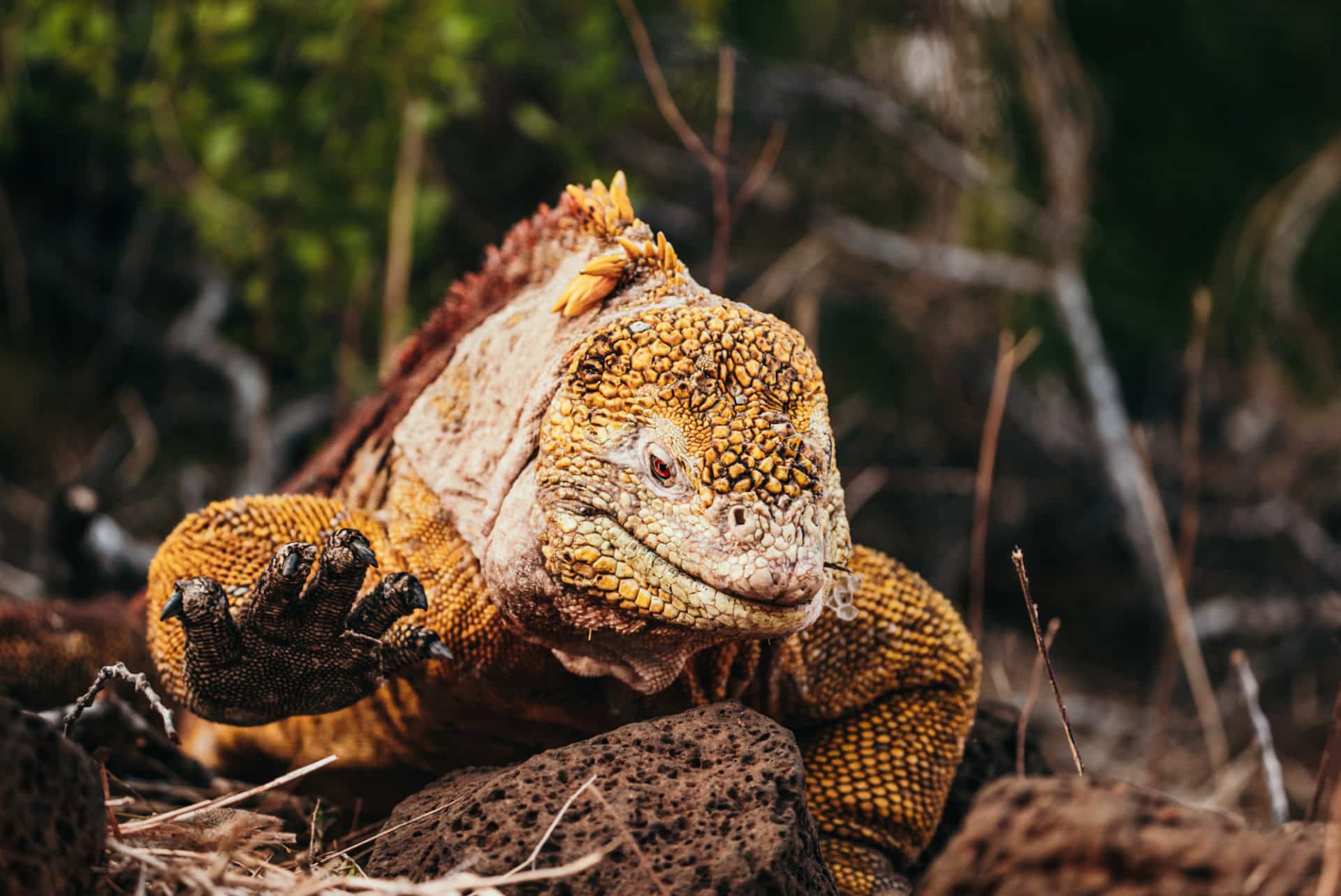 Land iguana at Dragon Hill on Santa Cruz Island
Land iguana at Dragon Hill on Santa Cruz Island
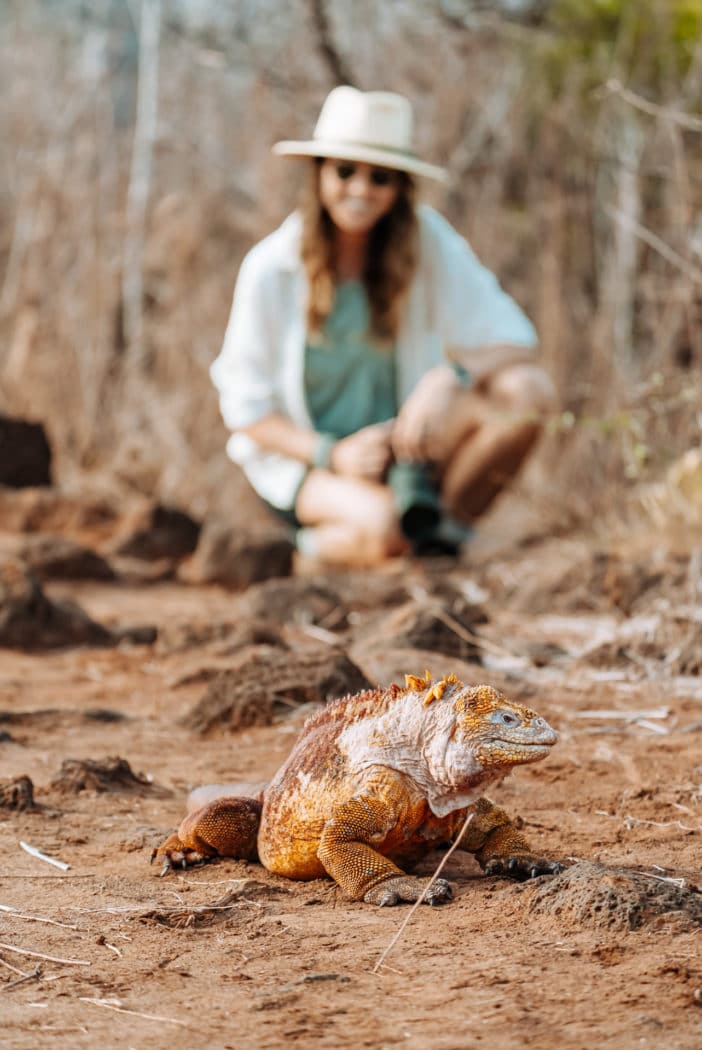

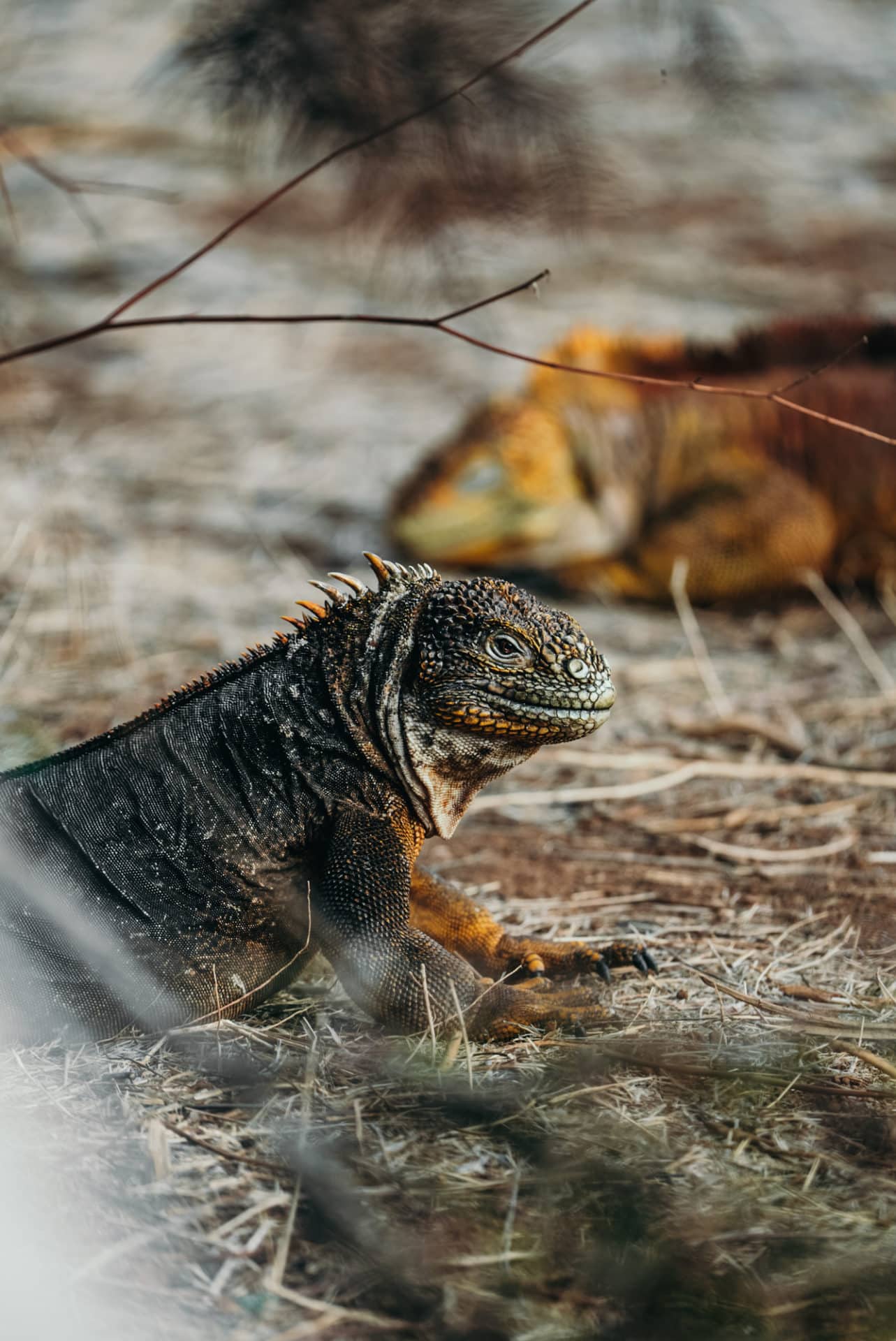 Female and male land iguanas in Galapagos Islands
Female and male land iguanas in Galapagos Islands
Inexperienced Sea Turtle
Standing: Endangered
Endemic to Galapagos: No
The place to See: Coastal waters across the archipelago
Native to the tropical waters of the Pacific, inexperienced sea turtles are generally noticed Galapagos Island creatures. They’re a vital a part of the marine ecosystem and are wonderful swimmers that may even sleep underwater.
The Galapagos inexperienced sea turtle mates through the hotter months when females bury their eggs on the seaside. The freshly hatched sea turtles dodge a number of predators like cormorants, albatrosses, and crabs as they race into the water. Of their aquatic pure habitat, they battle to outlive, dealing with sharks and frigatebirds till they attain maturity, 26 to 40 years later.
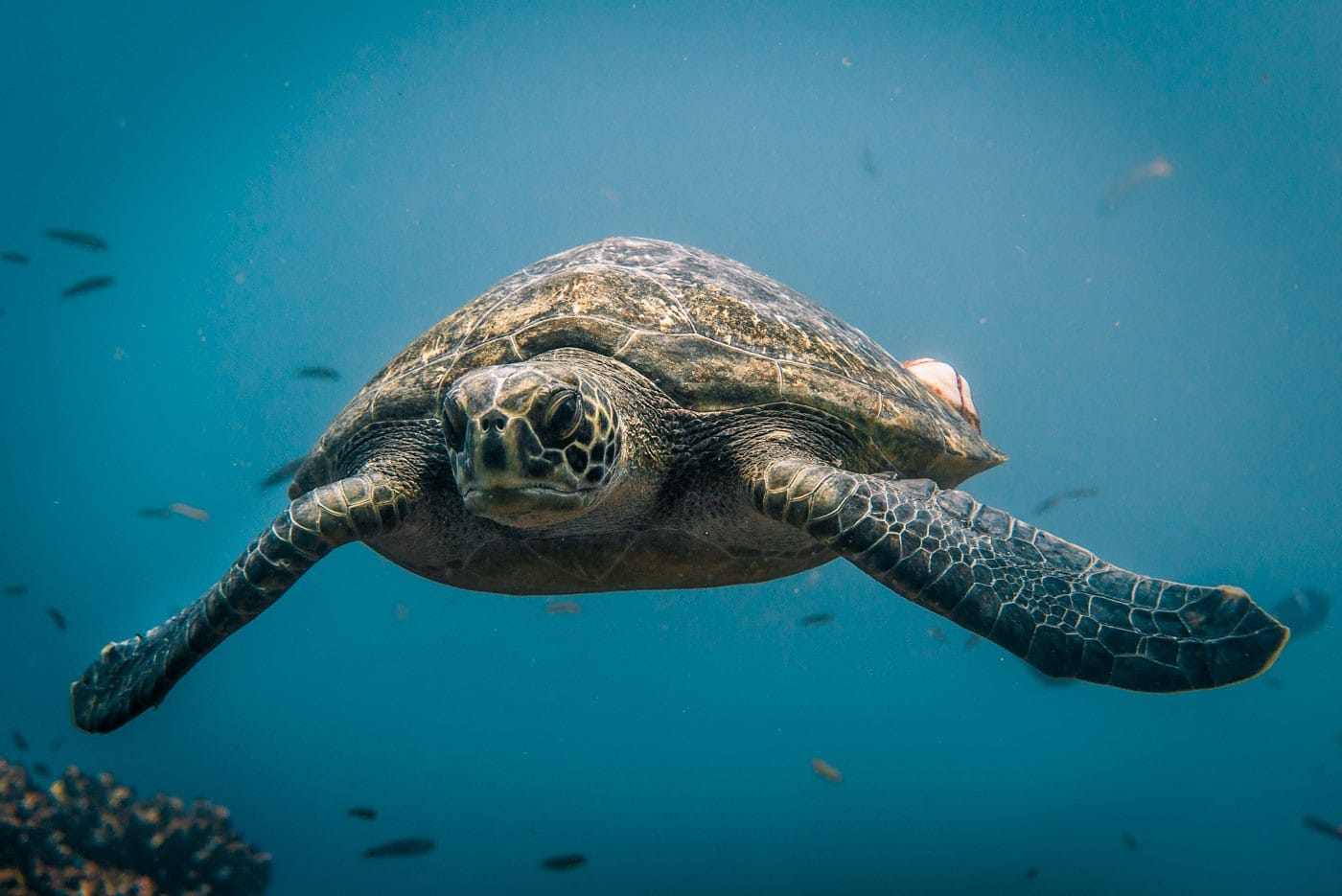 Sea turtle on the Gordon Rocks dive web site off the coast of Santa Cruz Island
Sea turtle on the Gordon Rocks dive web site off the coast of Santa Cruz Island
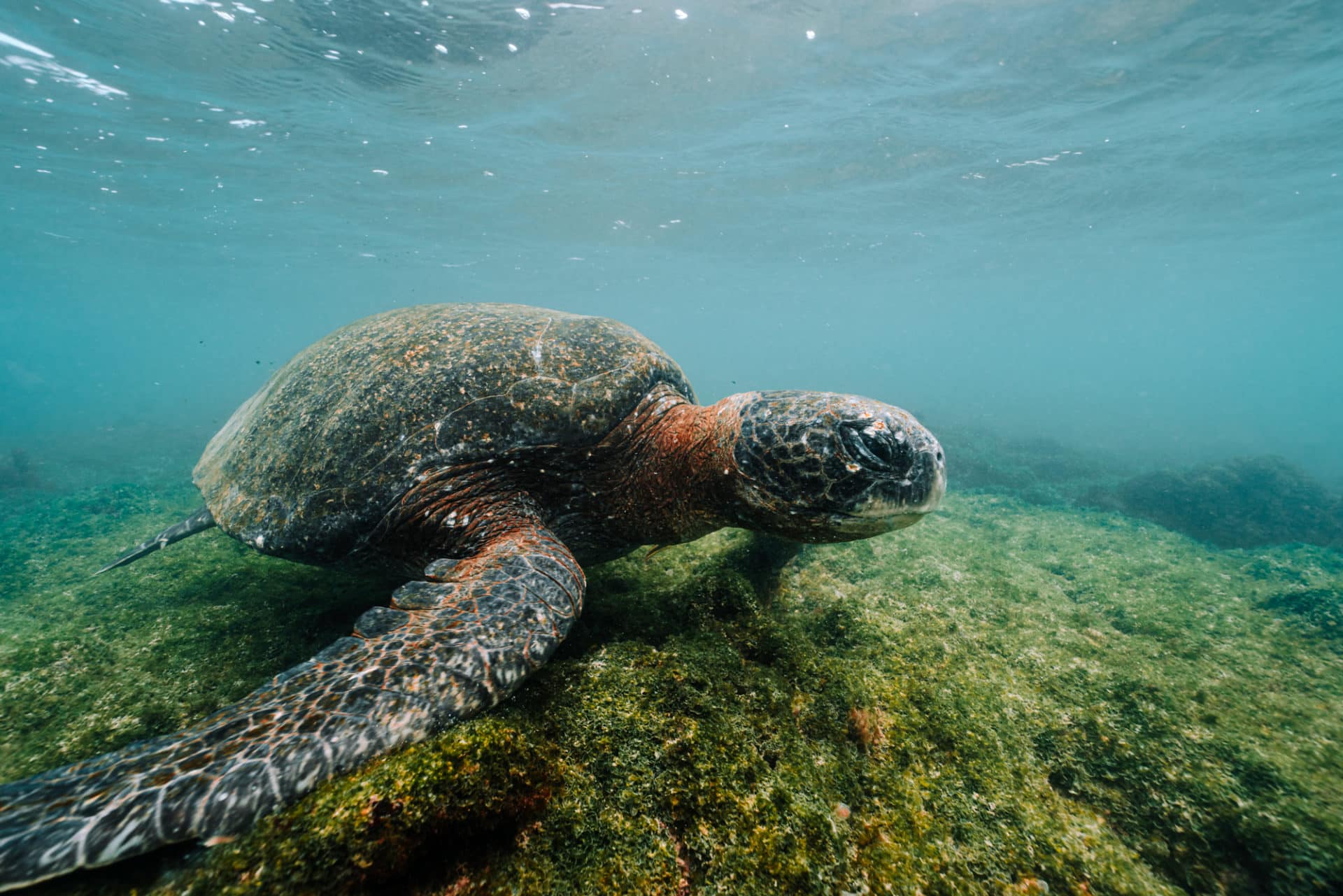
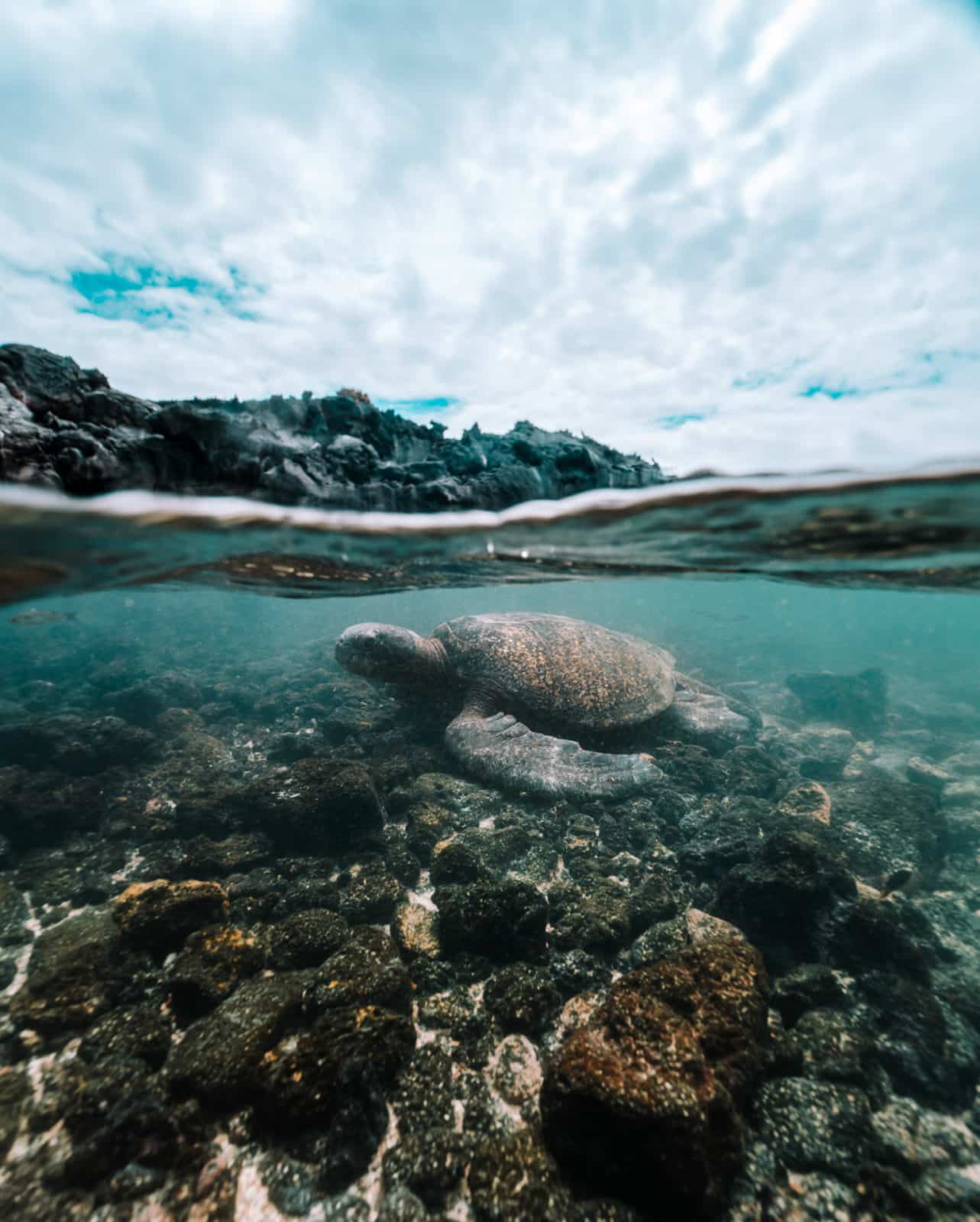 Galapagos turtle
Galapagos turtle
Lava Lizard
Standing: Least Concern
Endemic to Galapagos: No
The place to See: Scattered alongside lowlands of the archipelago
Lava lizards are the most typical reptile animals within the Galapagos Islands. Lava lizards seem like mini iguanas. They’re scattered all through the islands and coastal areas of South America, taking names from their places. Male species of the Galapagos lizard are sometimes brighter in color with tough, patterned pores and skin and yellow speckles.
The Galapagos lava lizard may be very territorial and makes use of push-ups as a show of masculinity and dominance. In different phrases, you may even see them having a push-up contest to compete for lizard king standing.
 Lava lizard
Lava lizard
Big Tortoise
Standing: Endangered
Endemic to Galapagos: Sure
The place to See: Santa Cruz highlands, Alcedo Volcano on Isabela Island
The large tortoises of the Galapagos Islands had been a number of the earliest animal species to inhabit the islands. They’re by far probably the most well-known animals from Galapagos Islands. A lot so, the title Galapágos truly derives from the Spanish phrase for tortoise.
There have been as soon as 14 separate species of Galapagos tortoises, together with the Pinta Island Tortoise, Fernandina Big Tortoise, and the Saddleback tortoise, however solely 12 stay right this moment. The final extinct Galapagos large tortoise was Lonesome George, a Pinta Big Tortoise who died on the age of 102 years again in 2012. All makes an attempt to mate him earlier than his passing had been, sadly, unsuccessful. Consequently, the Pinta tortoise species, also called the Abingdon Tortoise, at the moment are formally extinct.
Galapagos island tortoise species are typically very giant, averaging 250 kg (550 lbs) and 1.5 m (5 ft) in size. Given their 100+ yr life span, they spend most of their time resting and may miraculously survive as much as one yr with out meals or water.
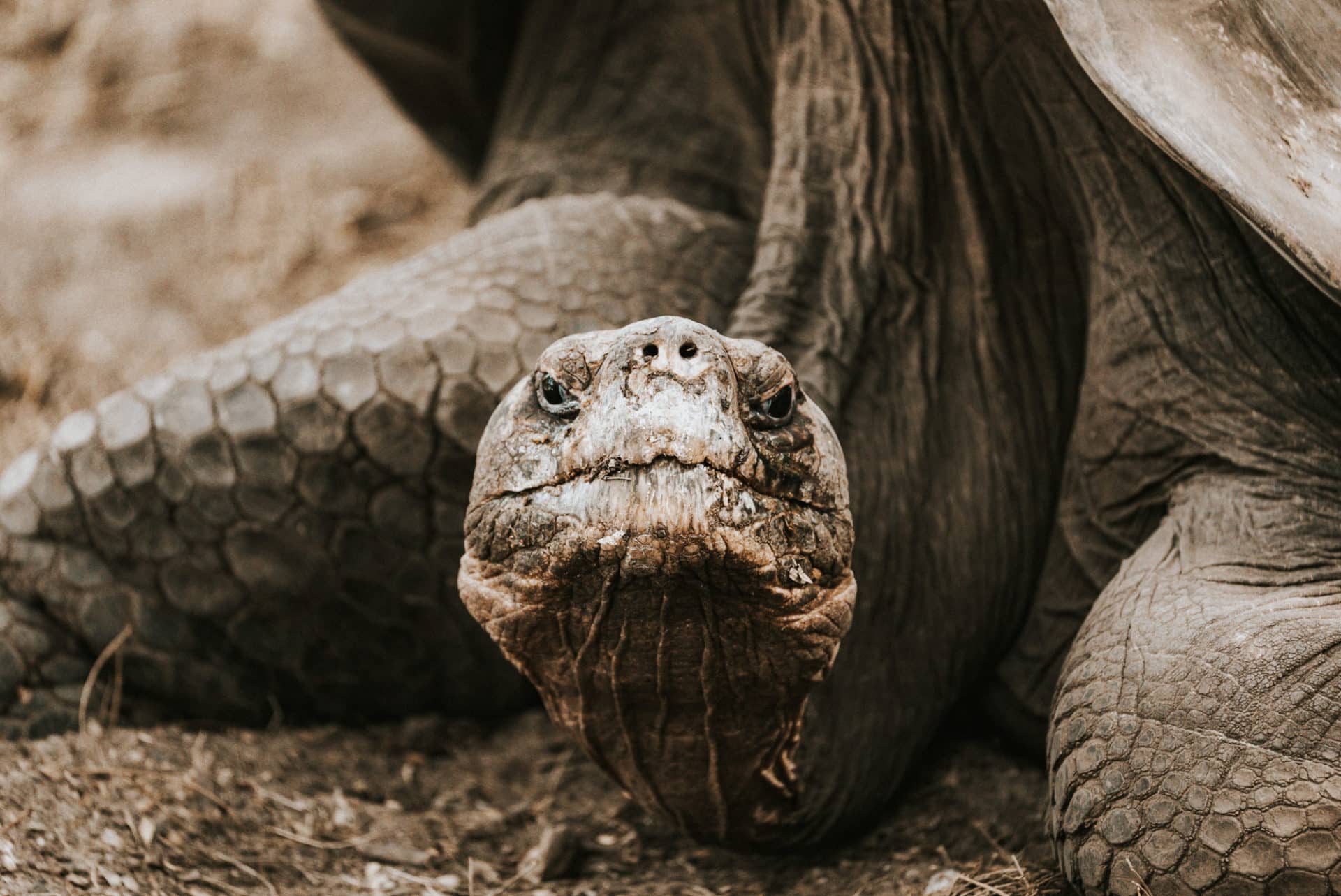 Saddleback tortoise on Galapagos Islands
Saddleback tortoise on Galapagos Islands
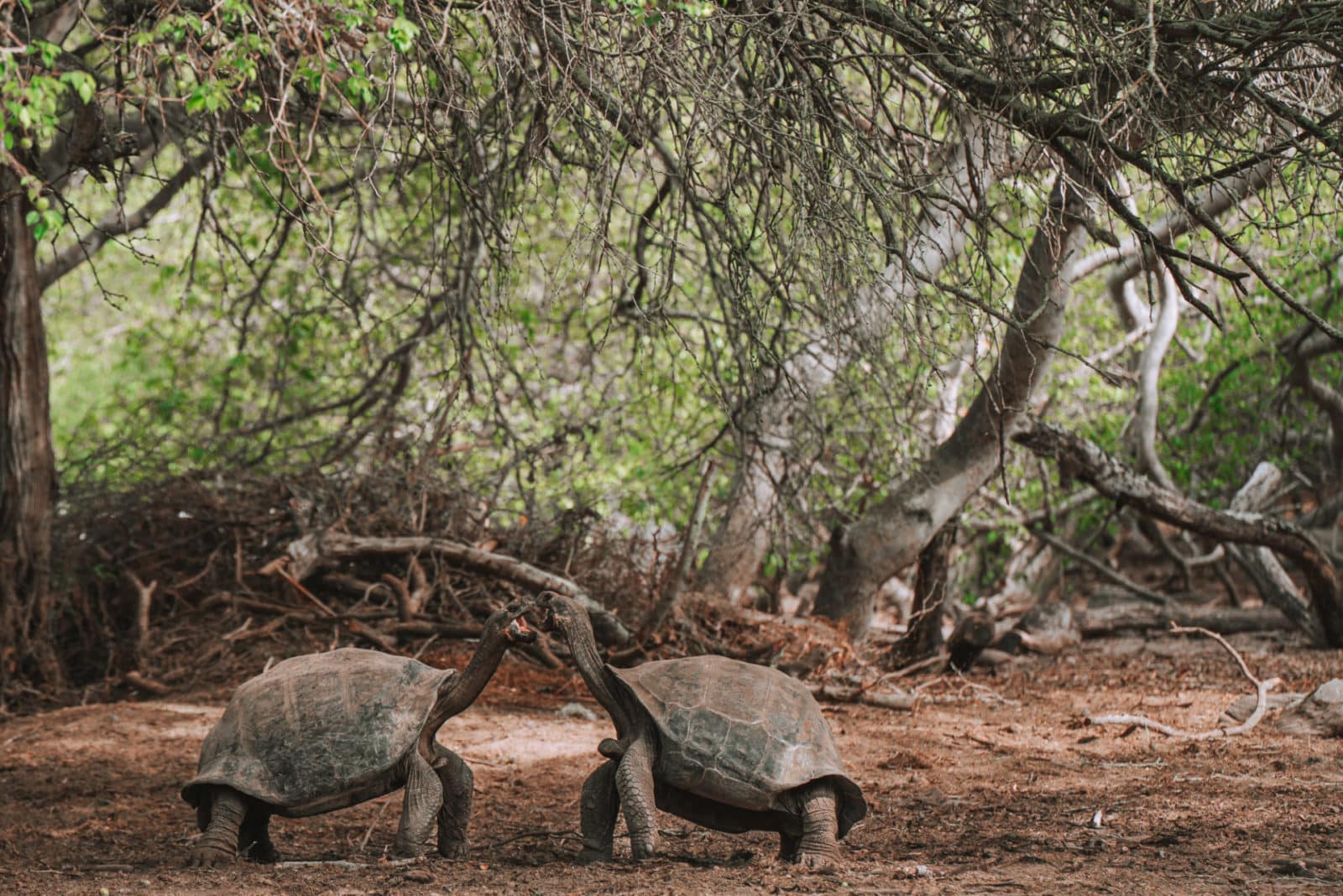 Galapagos tortoises on the breeding centre
Galapagos tortoises on the breeding centre
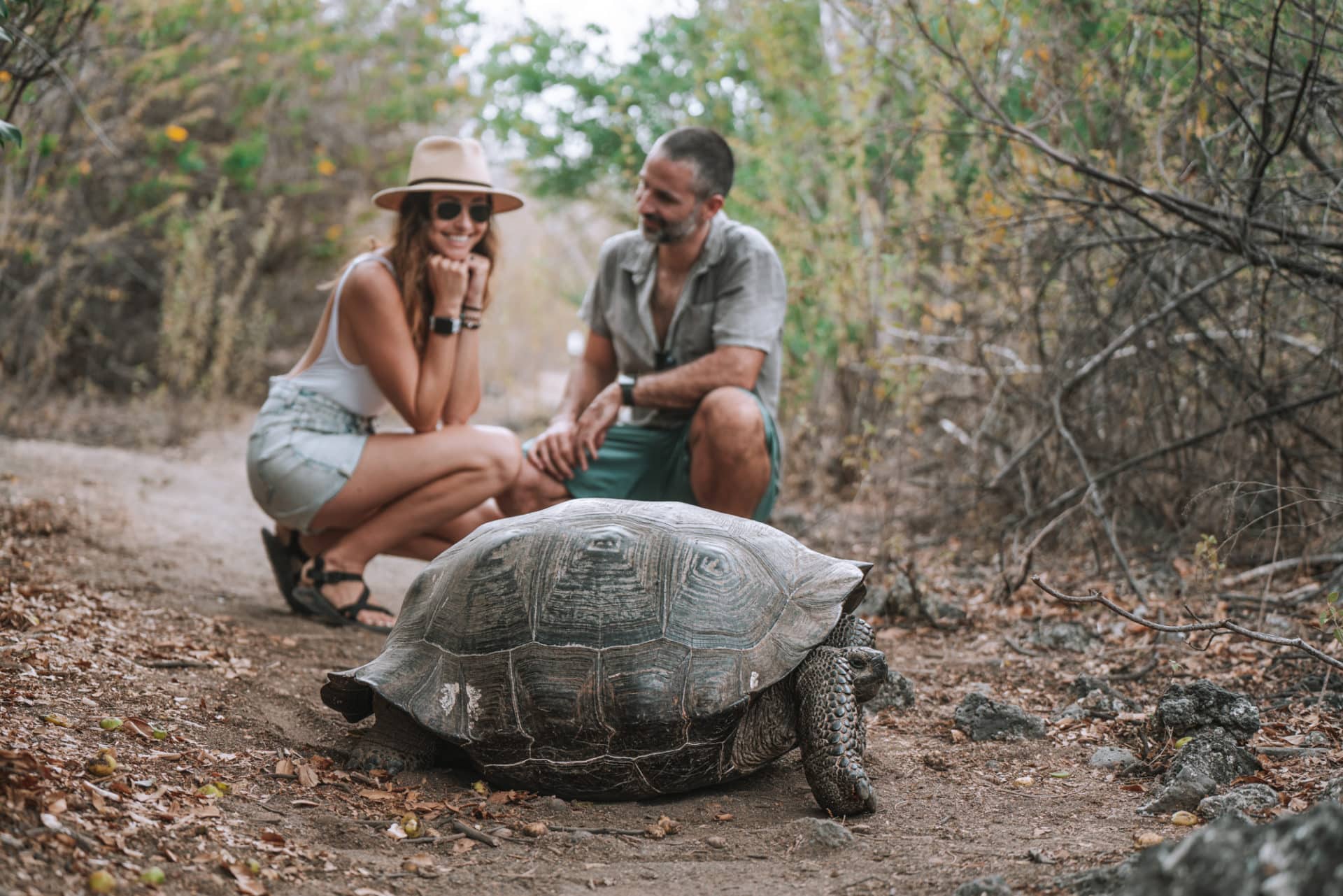 Big turtle sighting at Urbina Bay, Isabela Island
Big turtle sighting at Urbina Bay, Isabela Island
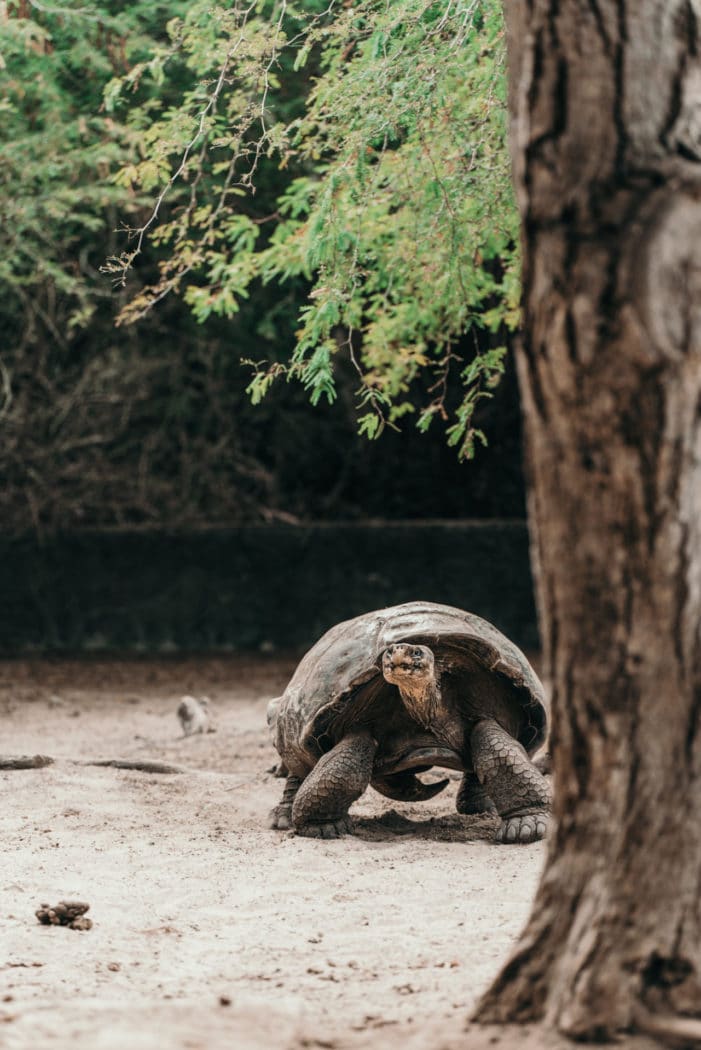

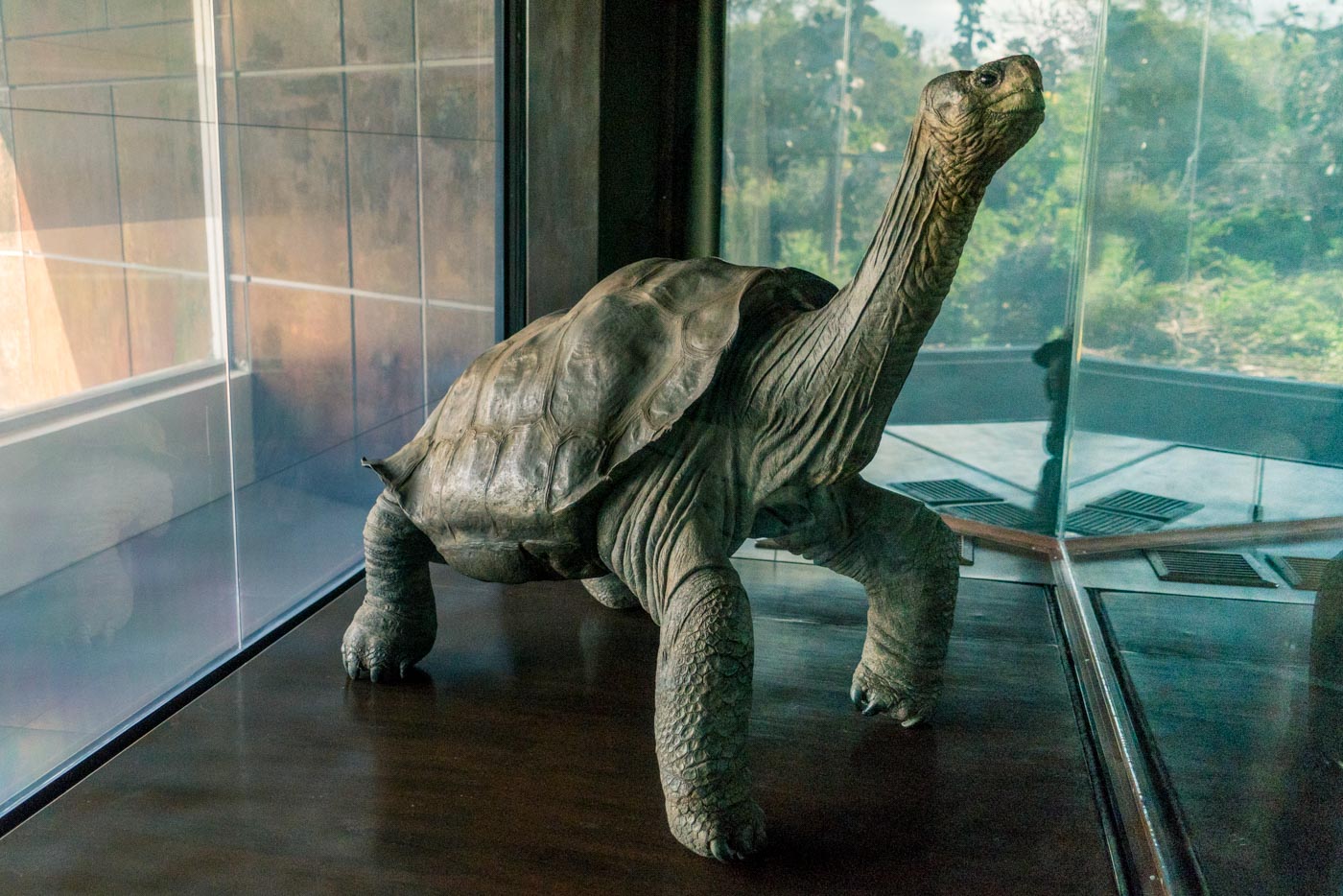 Taxidermy of Lonesome George on shows on the Charles Darwin Analysis Station
Taxidermy of Lonesome George on shows on the Charles Darwin Analysis Station
Birds
Galapagos Hawk
Standing: Susceptible
Endemic to Galapagos: Sure
The place to See: Isabela Island, Fernandina Island
An apex predator, the Galapagos hawk is one of many world’s rarest birds of prey. They’ve darkish brown plumage and a big wingspan reaching 120 cm (47 inches) on common. Females are bigger than males and mate with a number of companions all through the nesting interval. Then, males will take turns incubating the eggs and defending the low-lying nests.
Whereas the Galapagos hawk just isn’t endangered, its small inhabitants does go away them susceptible. They’re main scavengers and feed on carcasses and invertebrates like large centipedes and locusts.
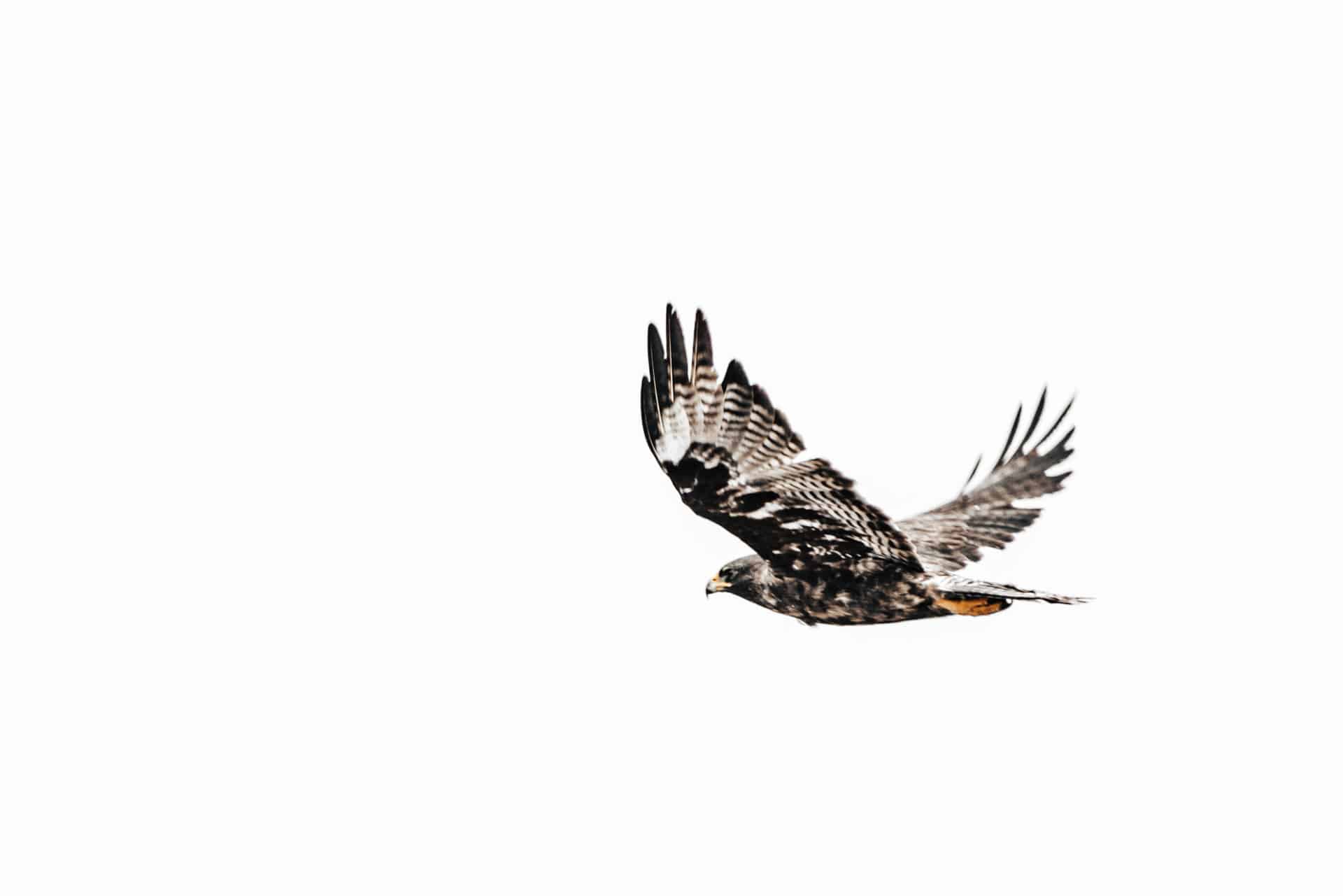 A Galapagos hawk in flight
A Galapagos hawk in flight
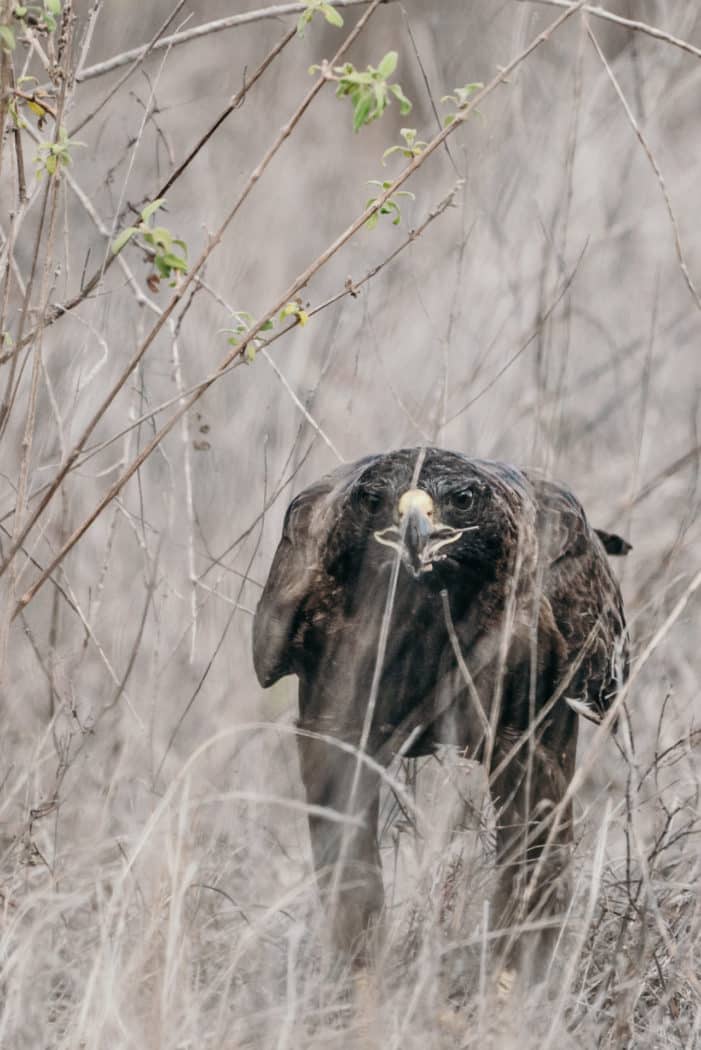
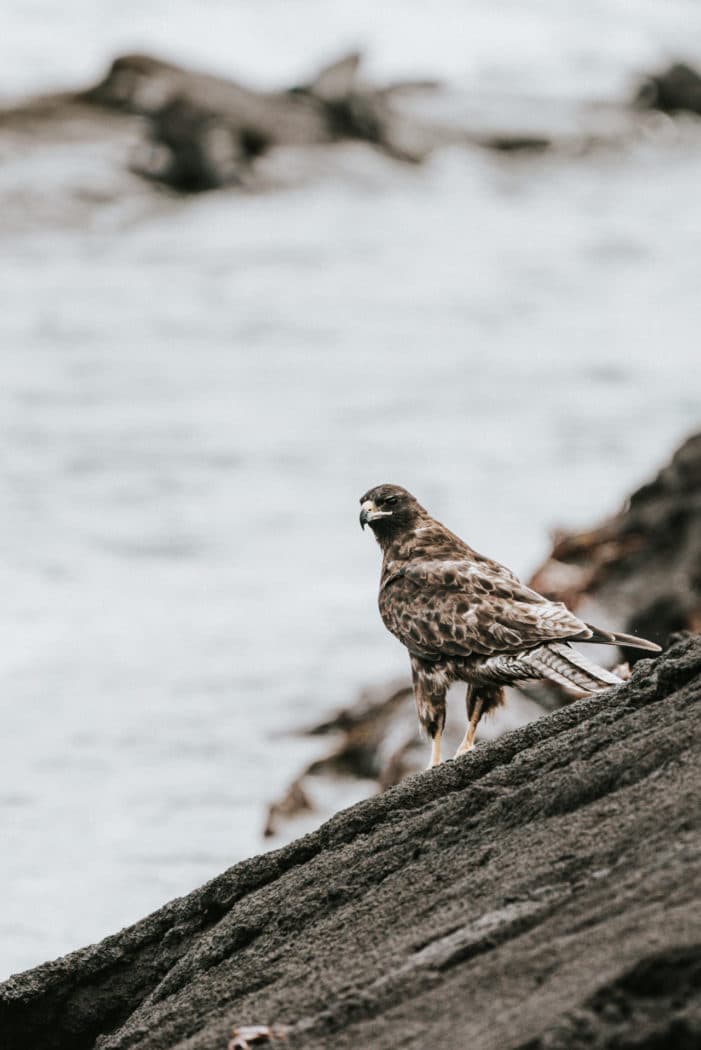
Galapagos Penguin
Standing: Endangered
Endemic to Galapagos: Sure
The place to See: Isabela and Fernandina Islands
Galapagos penguins are the solely penguin species on this planet that dwell in a tropical local weather. They’re probably the most northerly penguins and dwell in caves and crevices carved out of lava rocks. Like different penguins, they’re very agile underwater and mate for all times.
These tiny Galapagos Islands penguins survive on vitamins introduced in from the chilly Humboldt present. This makes them significantly susceptible to local weather change and ocean air pollution. Over 75% of the inhabitants was worn out throughout an El Niño in 1982 and now, it’s estimated that there’s lower than 2,000 Galapagos penguins.
 Penguins and boobies on the rock round Urbina Bay
Penguins and boobies on the rock round Urbina Bay
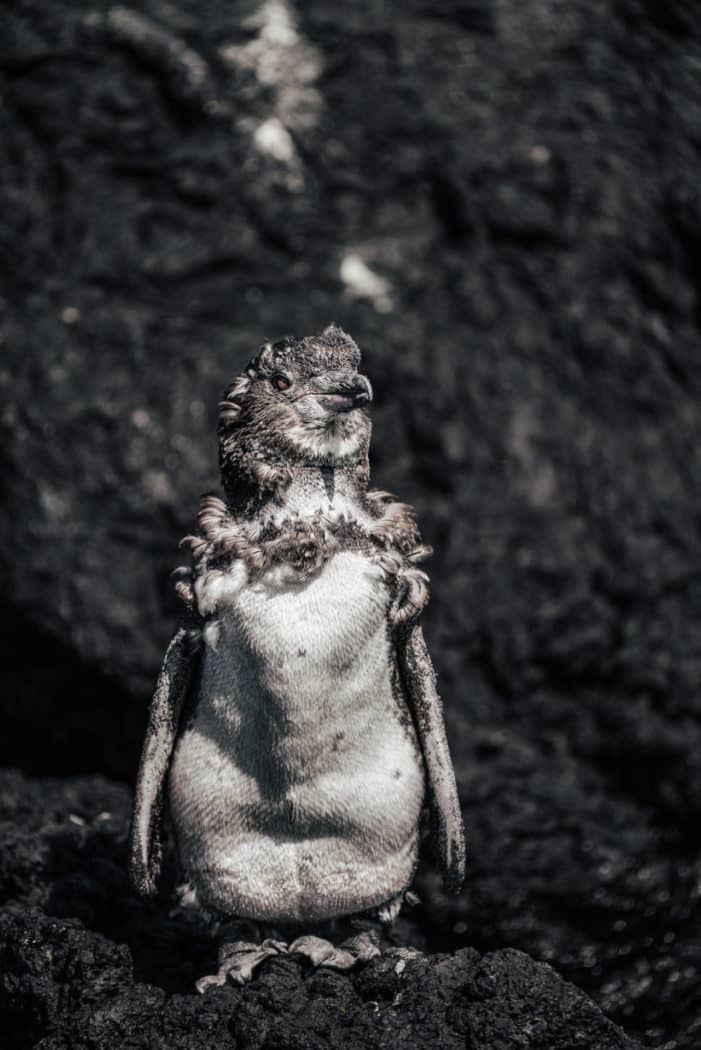
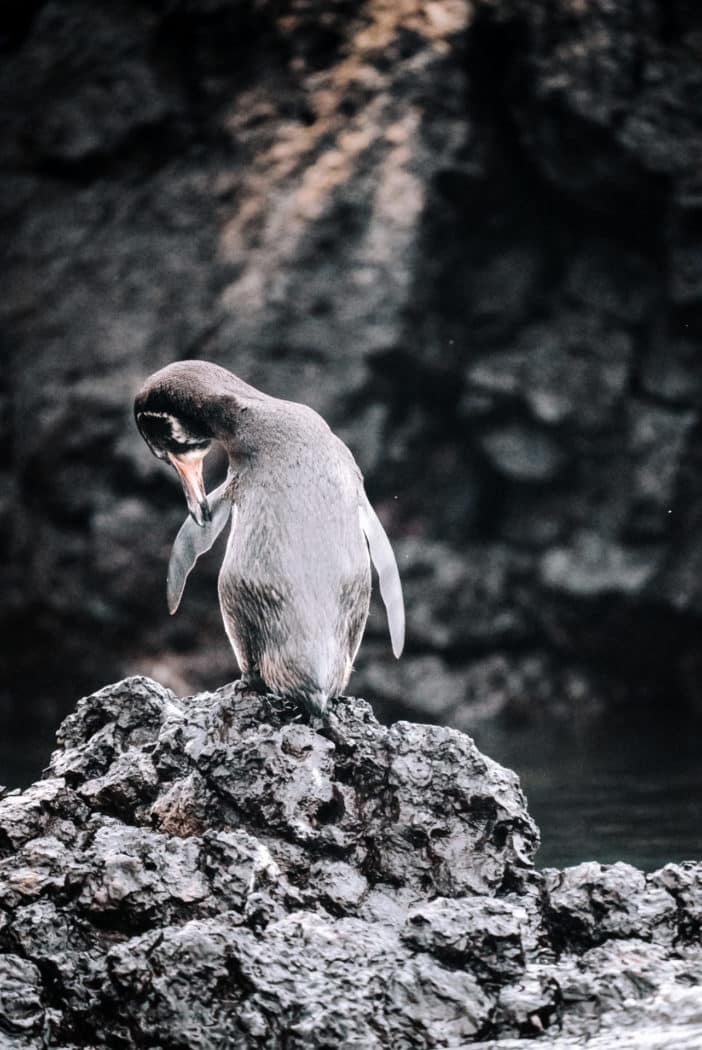
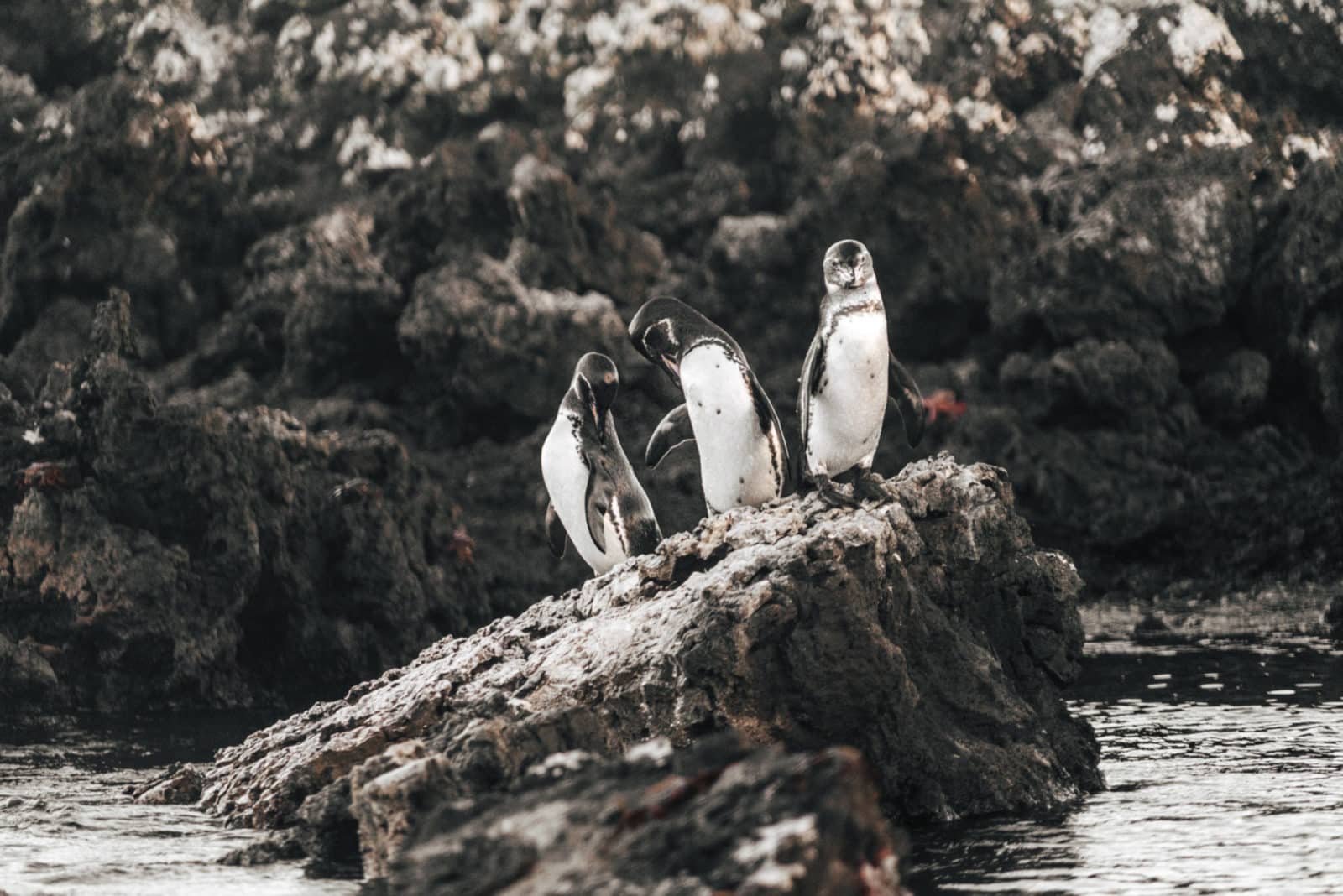 Galapagos penguins on the rocks on Isabela Island
Galapagos penguins on the rocks on Isabela Island
Galapagos Flamingo
Standing: Least Concern
Endemic to Galapagos: No
The place to See: Punta Cormorant (Floreana Island), Cerro Dragon (Santa Cruz Island), and Puerto Villamil (Isabela Island)
Certainly one of six species of flamingo on this planet, the American flamingo is a typical Galapagos animal. They’ve distinct pink plumage with black-tipped wings and curved payments. They use their payments to filter by way of water and feed on crustaceans, mollusks, worms, algae, and seeds.
Flamingos of the Galapagos Islands dwell about 60 years and lay just one egg at a time. Infants are born gray and regularly flip pink as they feed on meals loaded with carotenoids.

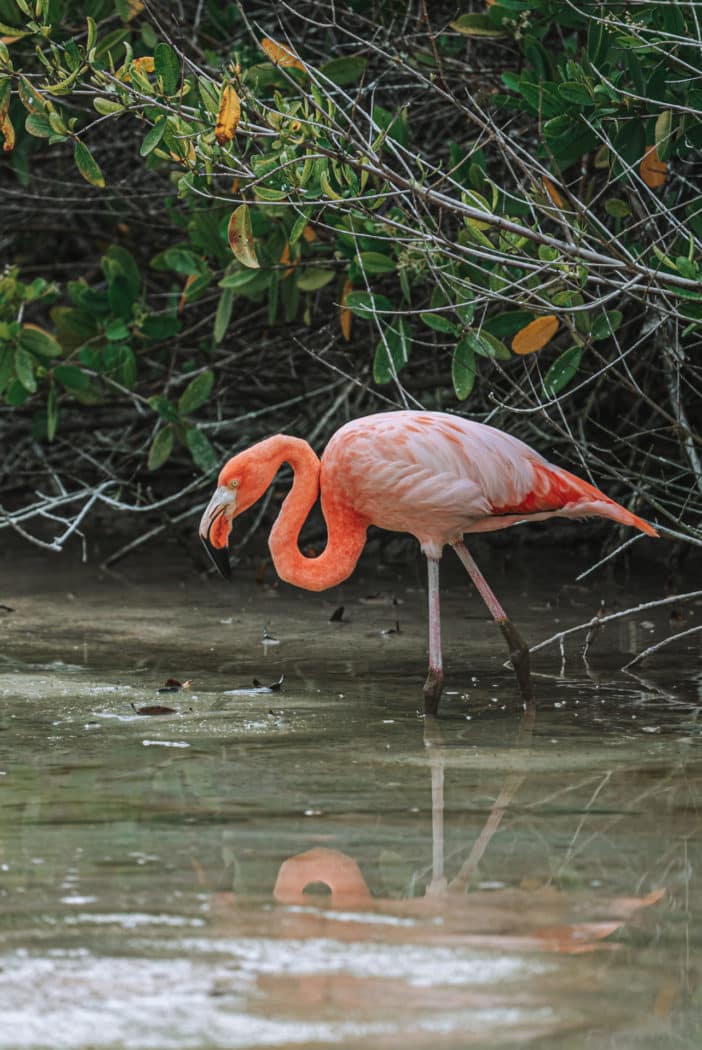
Darwin Finch
Standing: Critically Endangered
Endemic to Galapagos: Sure
The place to See: Completely different species are current on totally different islands – see the finch distribution chart
There are 15 species of Galapagos finches current on the archipelago with 13 of them endemic to the world. These had been made well-known by Charles Darwin as he studied the distinctive beak shapes of every species. Beaks developed to go well with the seeds and invertebrates that finches had been consuming of their respective areas.
A few of Darwin’s finches embody the mangrove finch, medium tree finch, and woodpecker finch. They’re all comparable in form, measurement, and color however have distinct variations based mostly on their habitats. Every has a novel beak form and measurement, in addition to a novel tune.
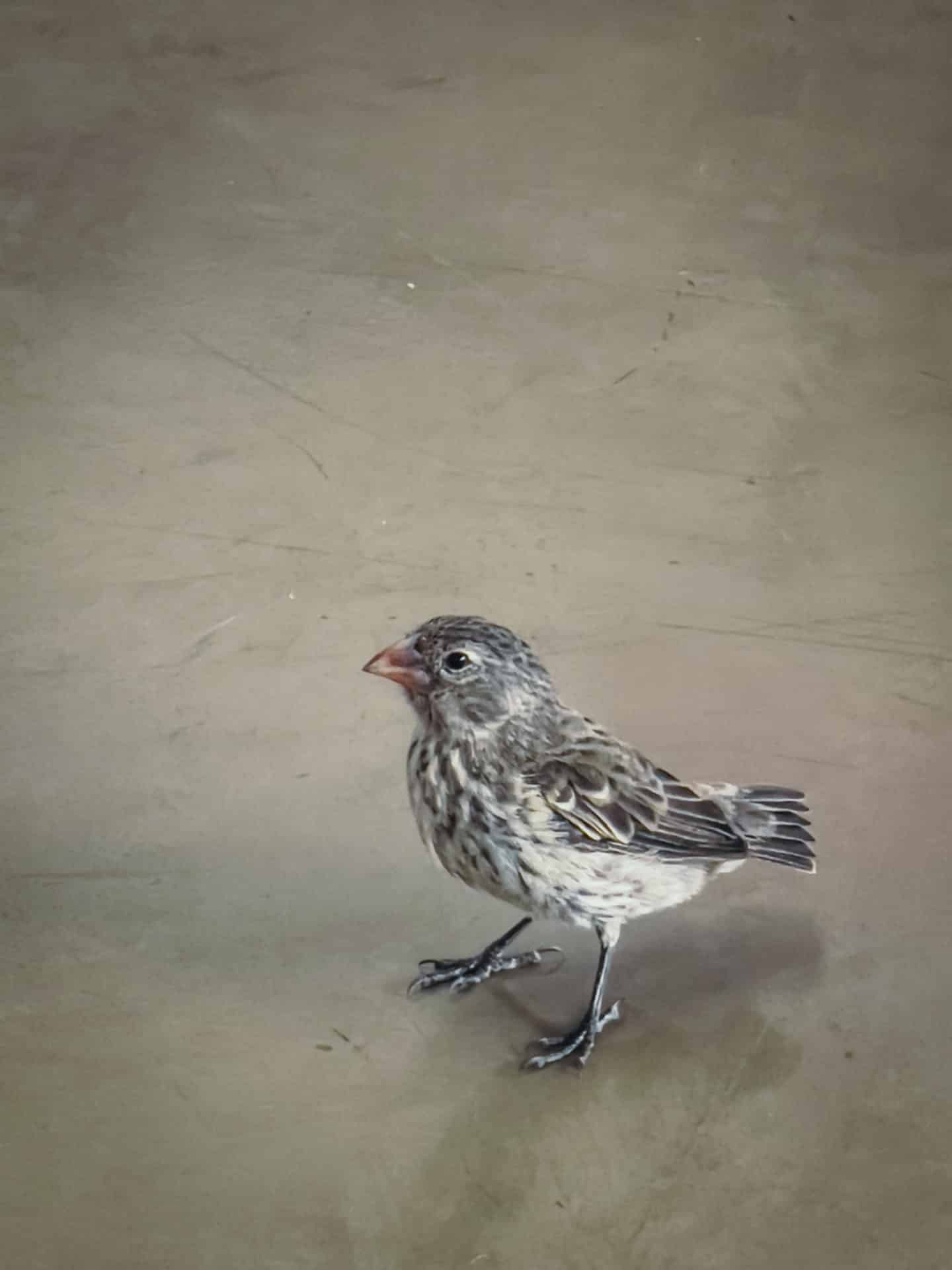 Darwin Finch
Darwin Finch
Blue-Footed Booby/Purple-Footed Booby
Standing: Least Concern
Endemic to Galapagos: No
The place to See: Purple-Footed frequent on Genovesa and San Cristobal. Blue-Footed frequent on Isabela, Santa Cruz, and North Seymour Island.
Simply identifiable by their brightly colored ft, the red-footed and blue-footed booby are clumsy Galapagos Islands birds. They transfer gracelessly on land however are highly effective flyers and professional divers. They’ll speed up as much as 90 km/h (60 mph) earlier than plunging into the water to seize their prey at a depth of 25 m (80 ft).
Boobies are very aerodynamic and feast on colleges of anchovies and sardines. Of the three species, red-footed boobies are the smallest and have longer toes, permitting them to grip onto tree branches. They’re additionally the toughest to identify, discovered totally on Genovesa island.
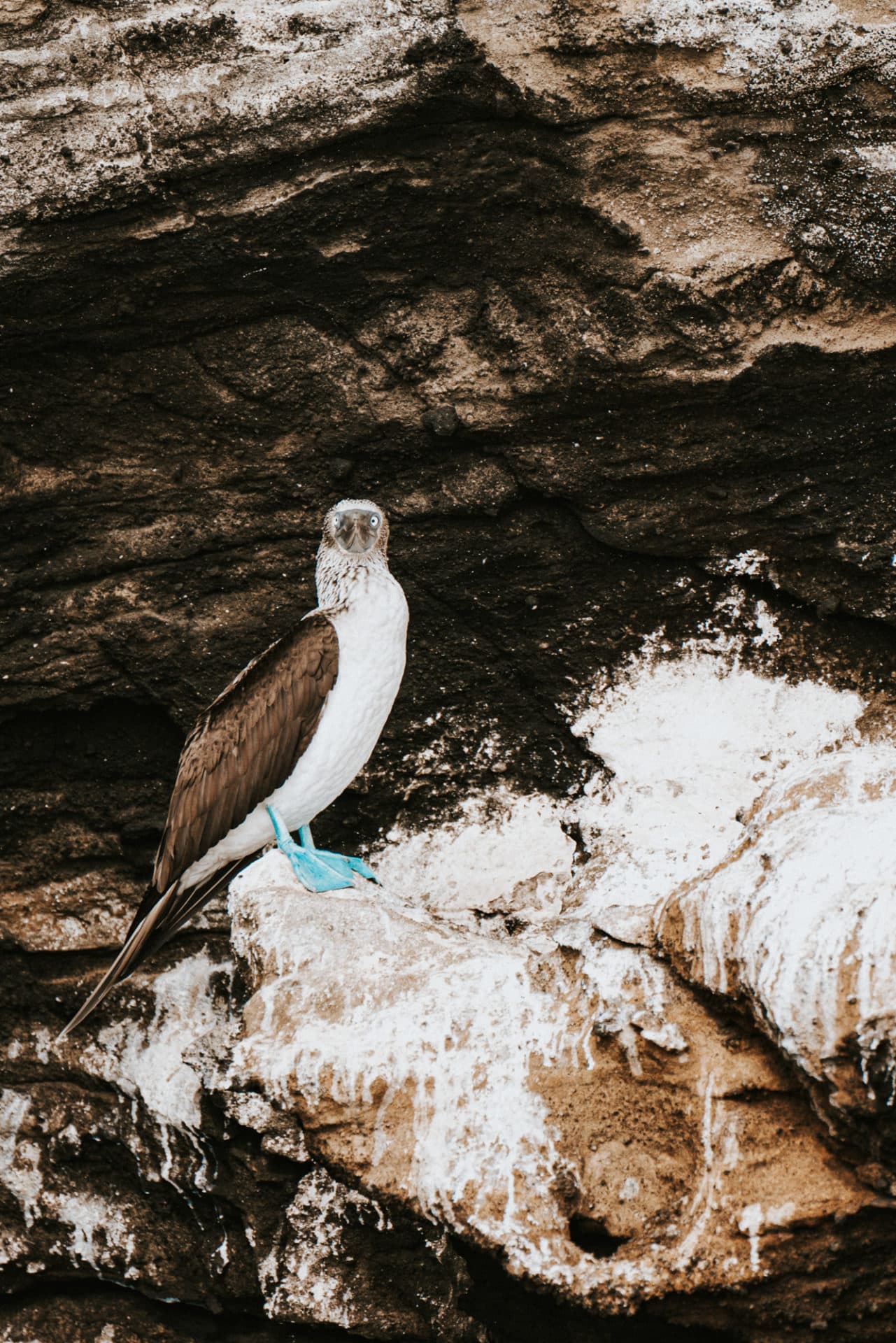
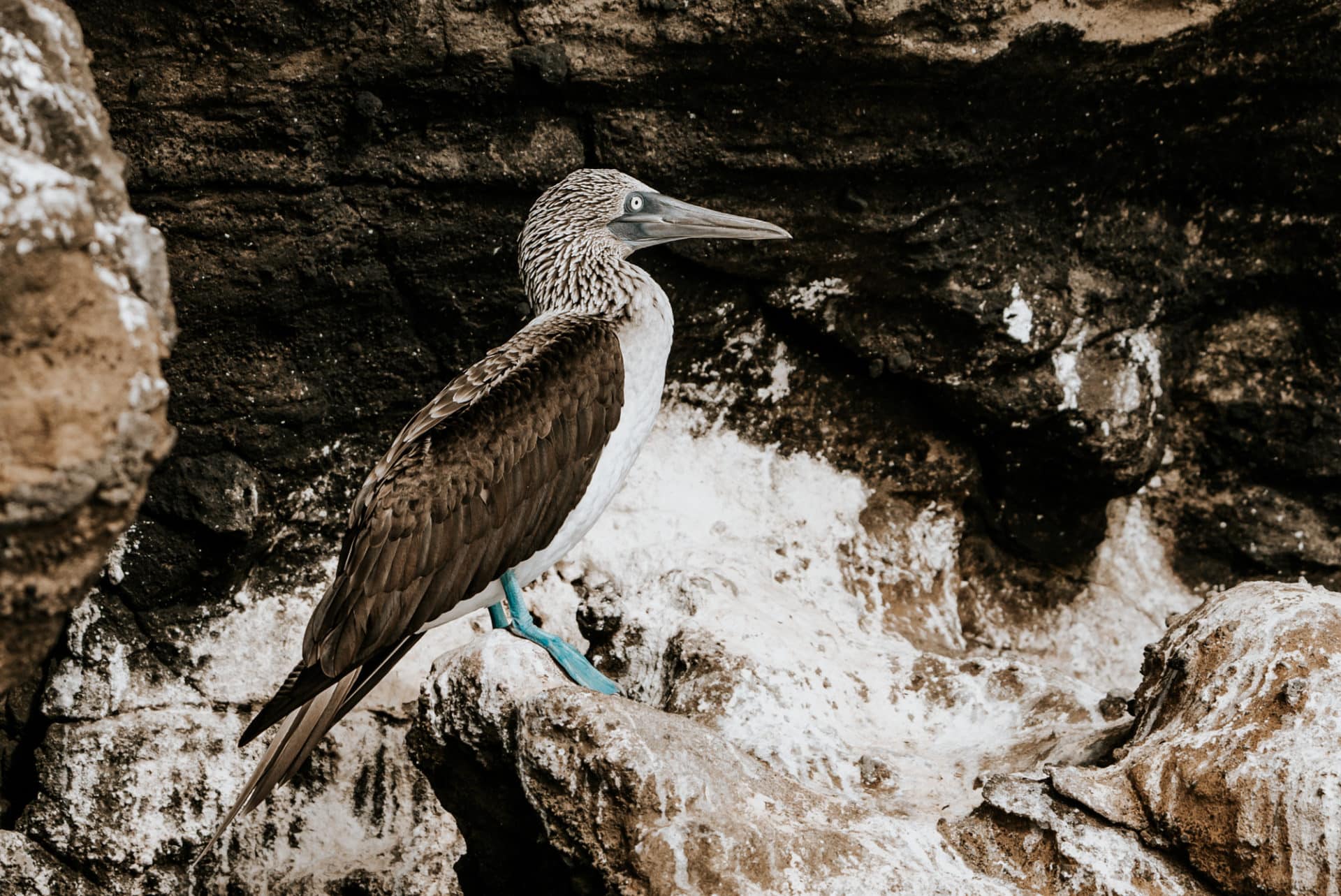 Blue footed booby on Santa Cruz within the Galapagos
Blue footed booby on Santa Cruz within the Galapagos
Flightless Cormorant
Standing: Susceptible
Endemic to Galapagos: Sure
The place to See: Isabela Island, Fernandina Island
A flightless cormorant is an instance of evolution. Flightless cormorants arrived within the Galapagos with wings used to flee predators. They then developed away from flying because of the lack of predators on the remoted islands. They shifted their talents to swimming however are nonetheless largely confined to the lava shores of Isabela and Fernandina Islands.
The flightless cormorant grew to breed underwater in a novel “courtship dance” the place men and women intertwine their necks. They eat largely eels and octopus and have brilliant turquoise eyes and black and brown plumage.
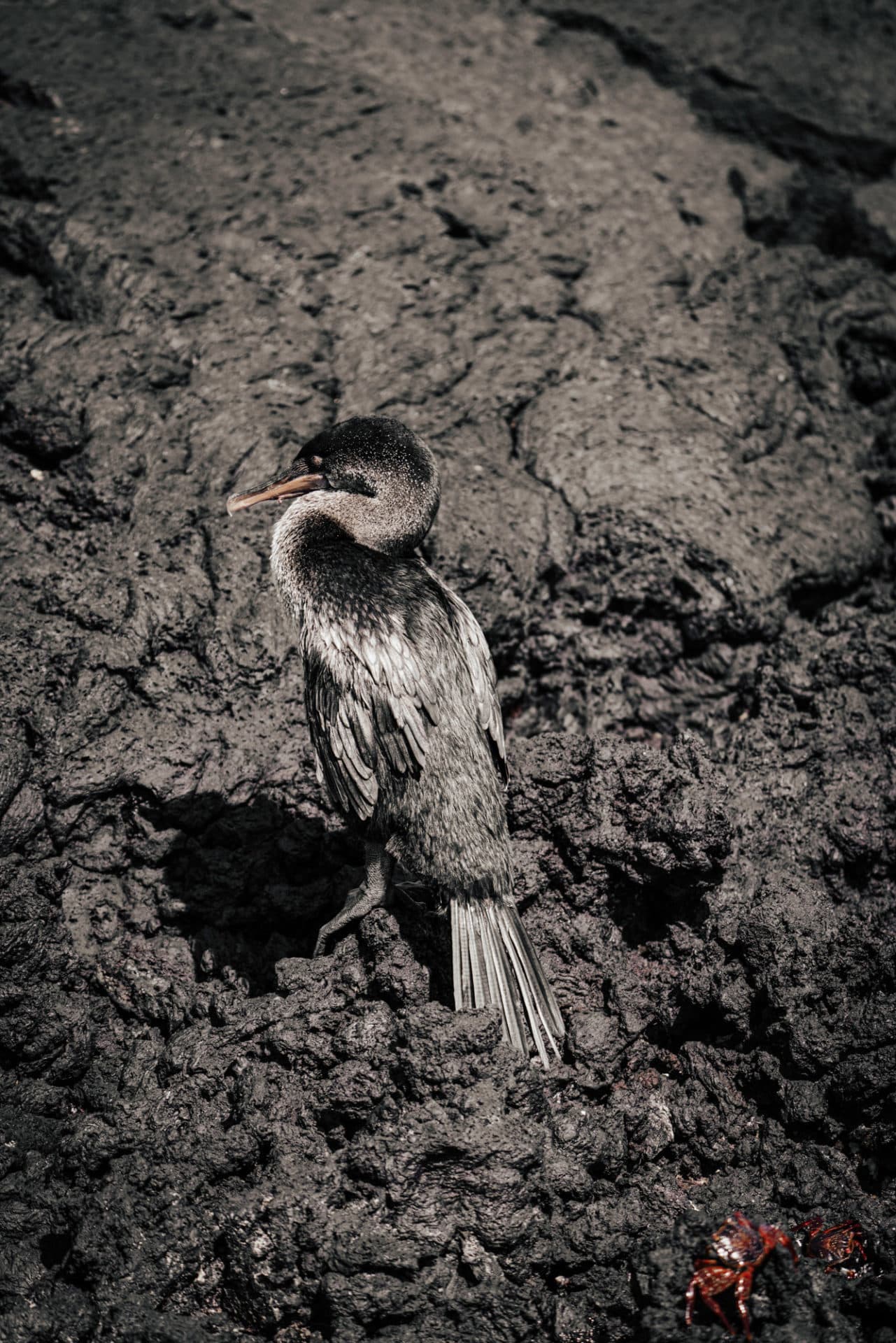 Flightless cormorant
Flightless cormorant
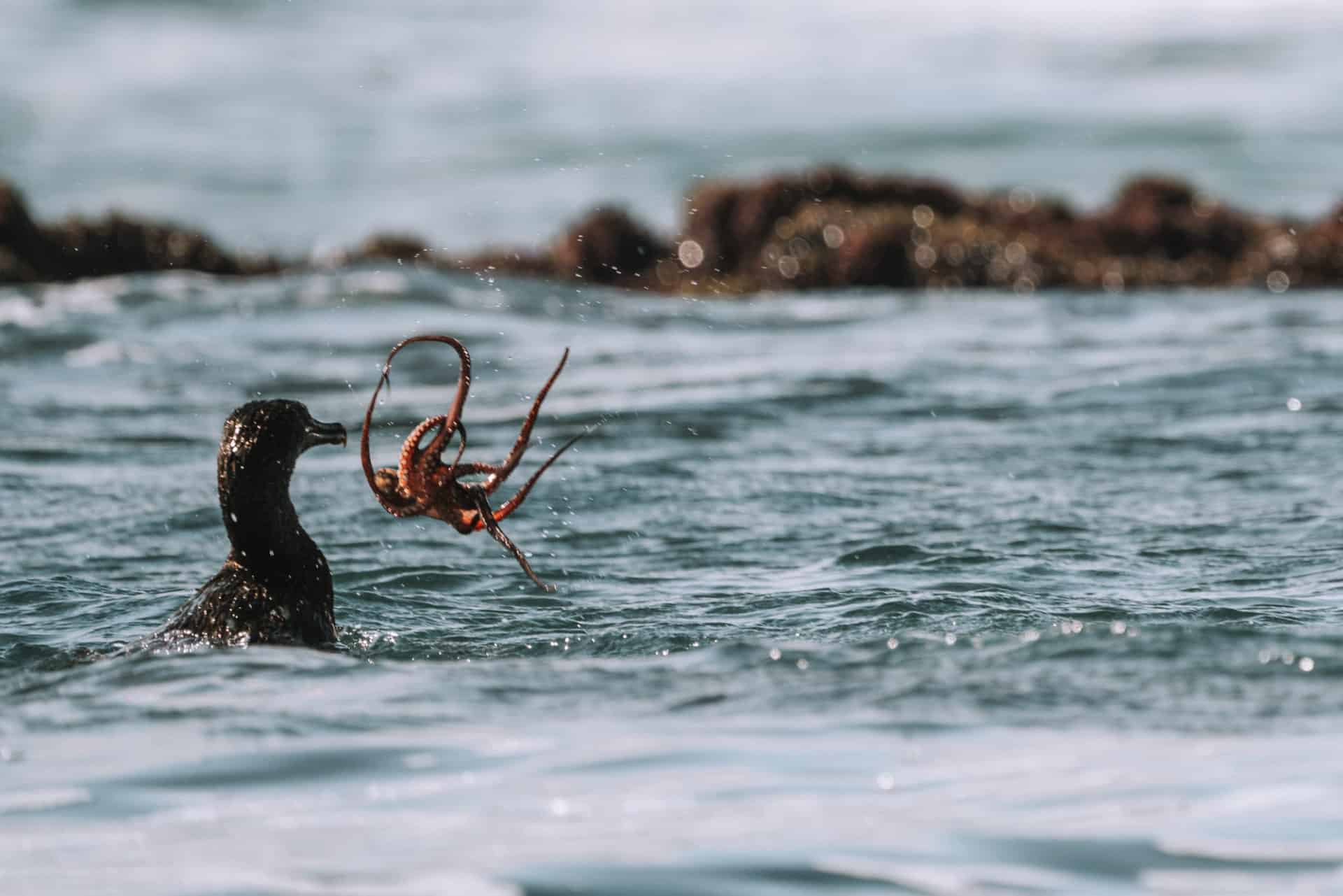 Flightless cormorant fishing for octopus
Flightless cormorant fishing for octopus
Nazca Booby
Standing: Least Concern
Endemic to Galapagos: No
The place to See: Punta Suarez (Española), Punta Pitt (San Cristobal), and Genovesa.
The third and largest species of booby birds on the Galapagos Islands, the Nazca booby has gray ft and orange beaks. Just like the others, Nazca boobies are wonderful plunge divers and feed on small fish like sardines and anchovies.
Their replica course of makes them reasonably distinctive animals that dwell within the Galapagos Islands. They lay two eggs throughout mating season. Each will hatch however solely the bigger and stronger child will survive. The small, weak chick is killed, leaving every Nazca booby with just one offspring to take care of.
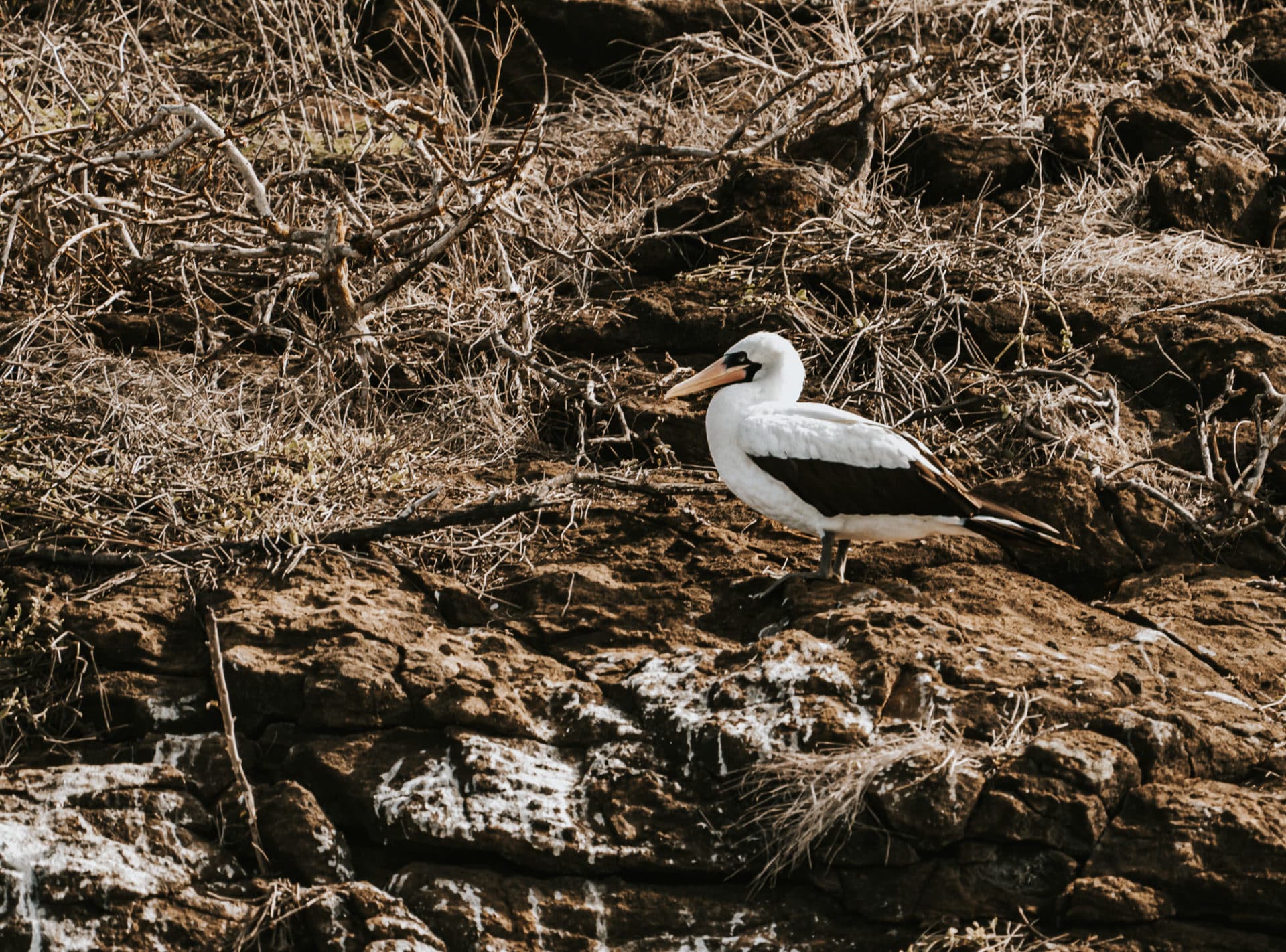 Nazca booby on Santa Cruz island
Nazca booby on Santa Cruz island
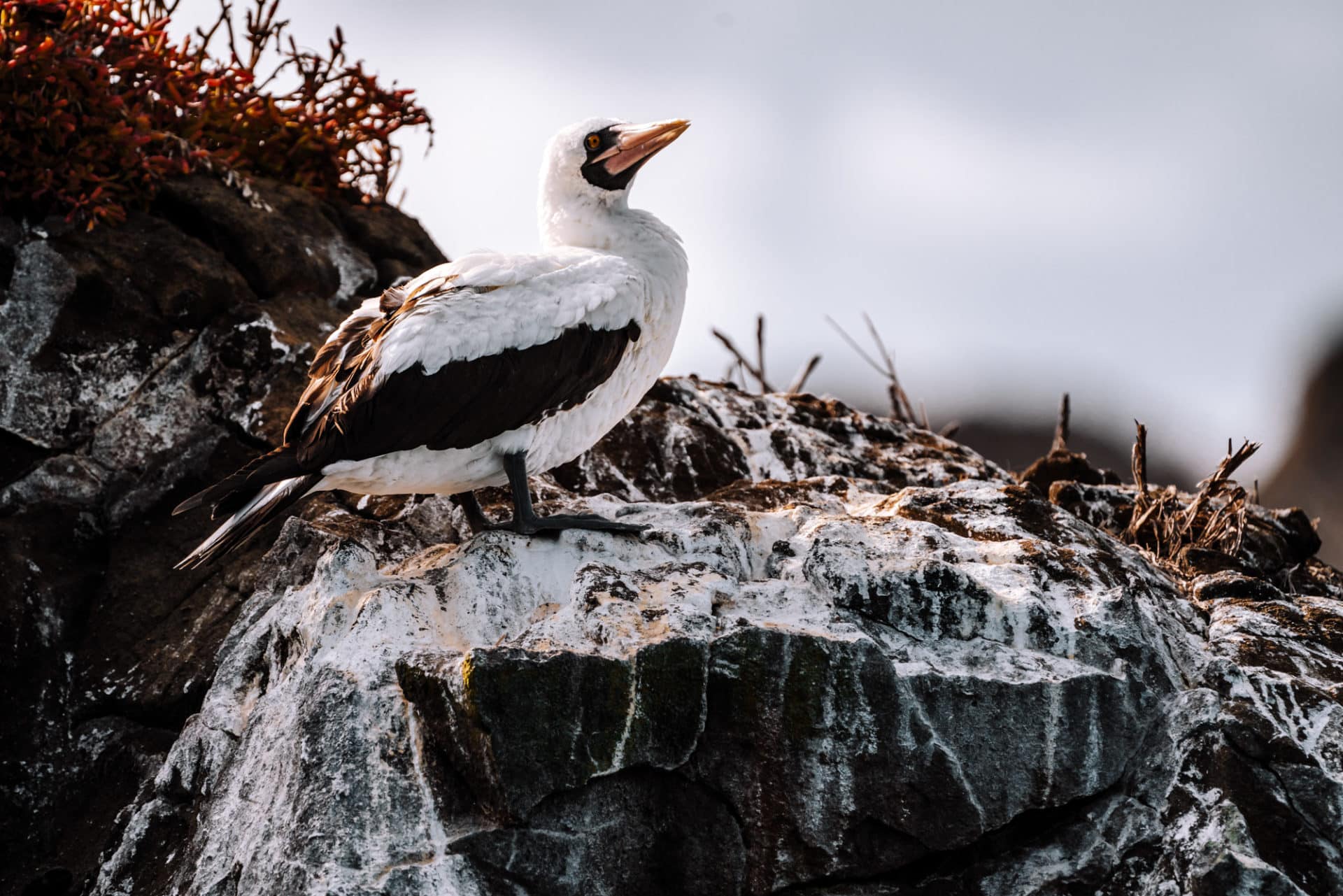 Nazca booby on Santa Cruz within the Galapagos
Nazca booby on Santa Cruz within the Galapagos
Waved Albatross
Standing: Critically Endangered
Endemic to Galapagos: No
The place to See: Punta Suarez (Espanola Island)
The waved albatross is likely one of the largest of the Galapagos Island animals. It has a wingspan of a whopping 2.2 m (7 ft). The albatross are characterised by their white heads and uninteresting yellow beaks, with a brown physique and blueish ft.
They’ve a definite courting ritual that features dancing, clacking, waddling, and mooing like cows. As soon as the pairs have courted, they mate for all times and have a lifespan of 30 years. The waved albatross is critically endangered, with solely 12,000 breeding pairs scattered across the Galapagos, Colombia, and Peru. And sadly, now we have but to see one within the wild!
Galapagos Dove
Standing: Least Concern
Endemic to Galapagos: Sure
The place to See: Scattered round arid lowlands, particularly on Genovesa Island
Identified to be tame and curious, the Galapagos Dove is one other superb feat of evolution. They like dry, arid areas the place the Opuntia cactus grows and have taken on the function of pollinators within the absence of bees on the Galapagos Islands.
In contrast to Darwin’s finches, the doves spend most of their time on the bottom as a substitute of within the air. They’re reddish-brown with black and white markings and have crimson ft with a definite blue ring across the eye. You’ll discover them foraging for seeds and fruits or pretending to be injured once they really feel threatened.
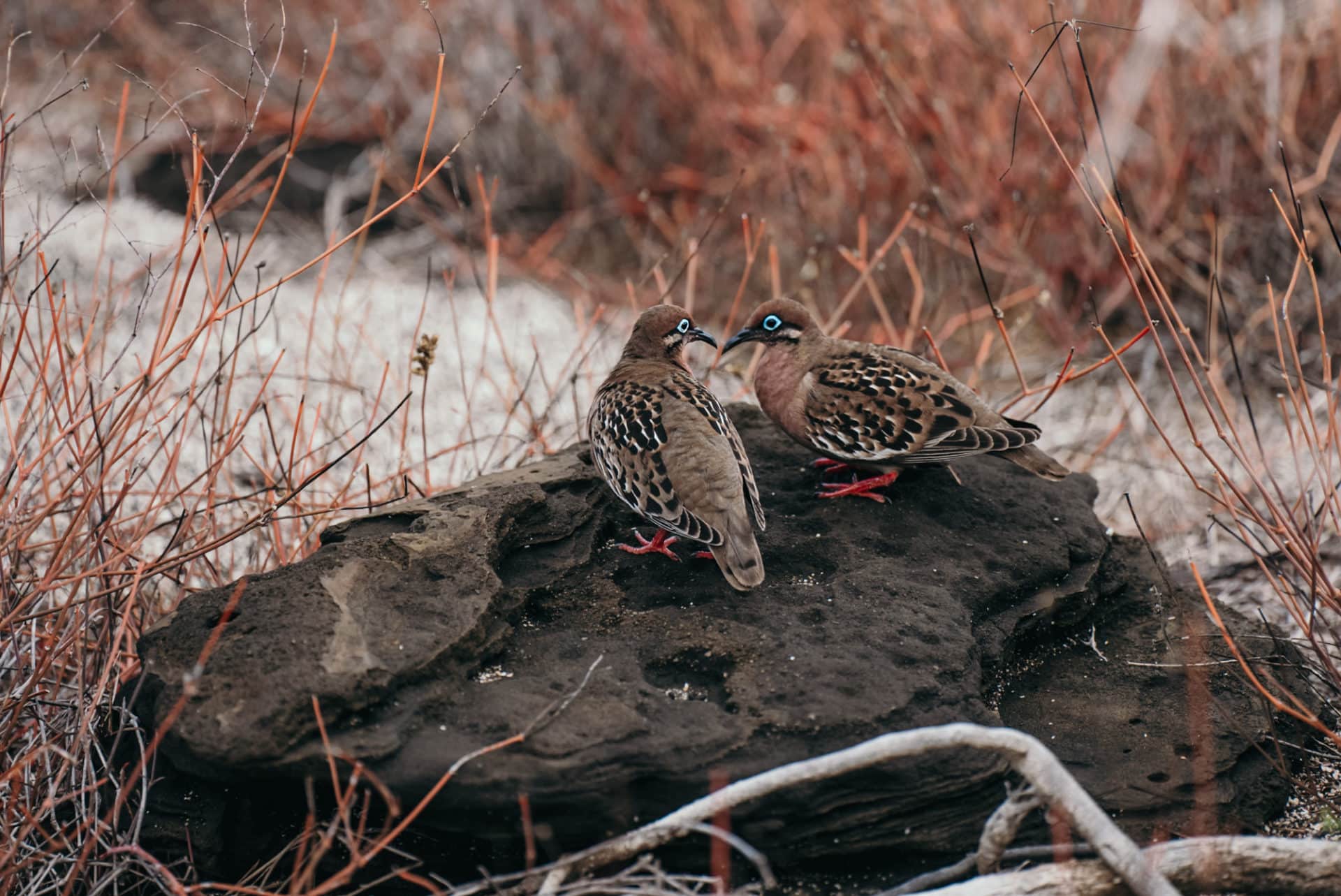 A pair of Galapagos doves
A pair of Galapagos doves
Marine Animals of the Galapagos
Galapagos Shark
Standing: Least Concern
Endemic to Galapagos: No
The place to See: Waters round Wolf and Darwin Islands
Heat-water Galapagos sharks are surprisingly not endemic to the Galapagos Islands regardless of their title. The Galapagos shark is a kind of requiem shark that carefully resembles a reef shark. They’re giant with slender our bodies and 14 rows of serrated enamel.
You would possibly see a Galapagos shark whereas diving, as they’re normally discovered round 100m in depth. They feed on bony fish and are even identified to be cannibalistic towards shark pups.
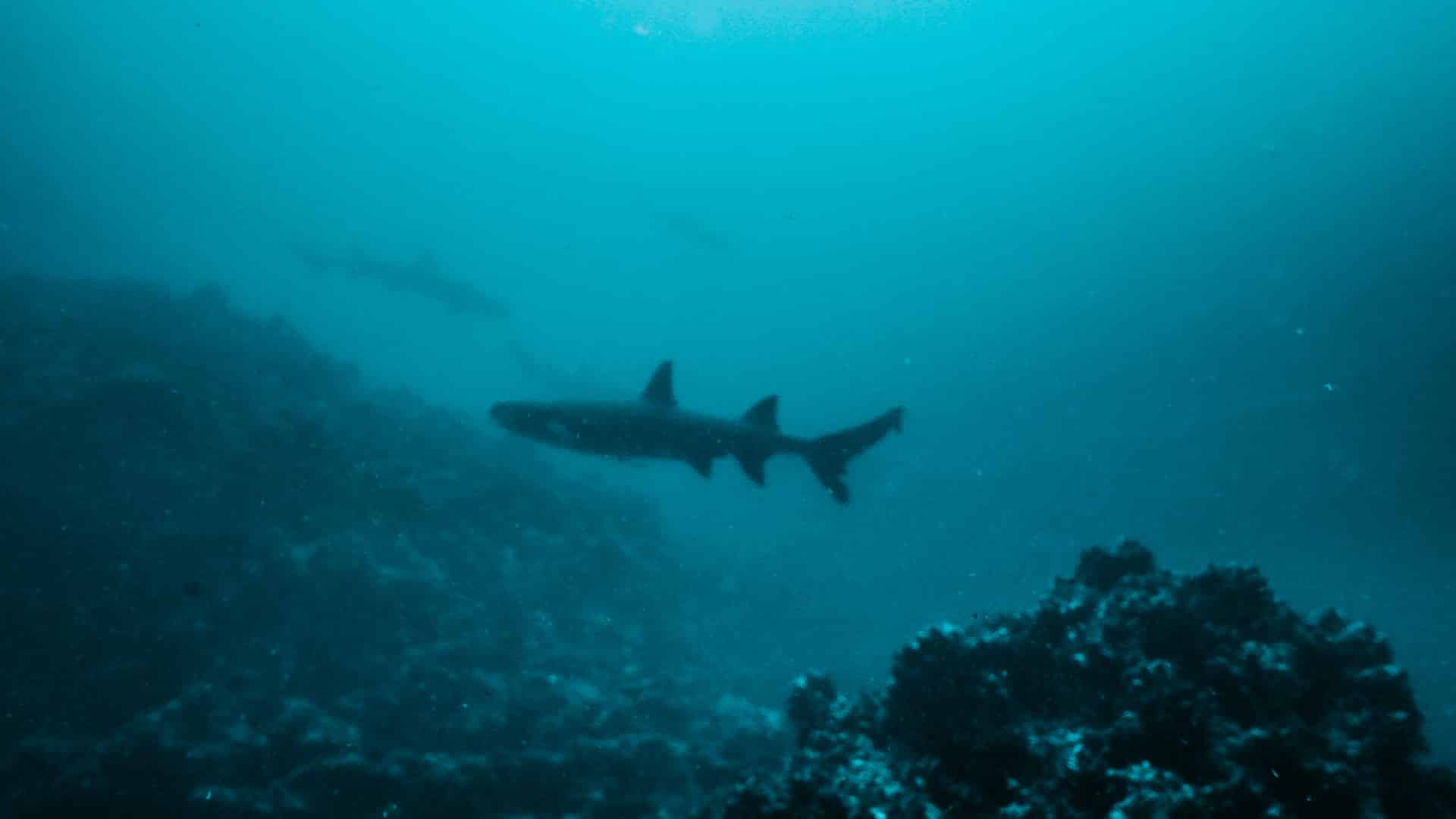
Sally Lightfoot Crab
Standing: Least Concern
Endemic to Galapagos: No
The place to See: Scattered everywhere in the seashores and shallow waters of the archipelago
Sally lightfoot crabs are frequent Galapagos Islands creatures that you just’ll typically see crawling alongside the shores and seashores. They’re straightforward to identify due to their brilliant crimson colouring and blue markings. Although quite common within the Galapagos, they can be discovered everywhere in the western coast of South and Central America.
The eating regimen of a sally lightfoot crab is fairly broad as they’ll eat just about something. This makes them vital to the ecosystem since they hold seashores clear of natural particles and eat ticks off of the marine iguana. They’re fast, arduous to catch and get extra vibrant with each moulting cycle.
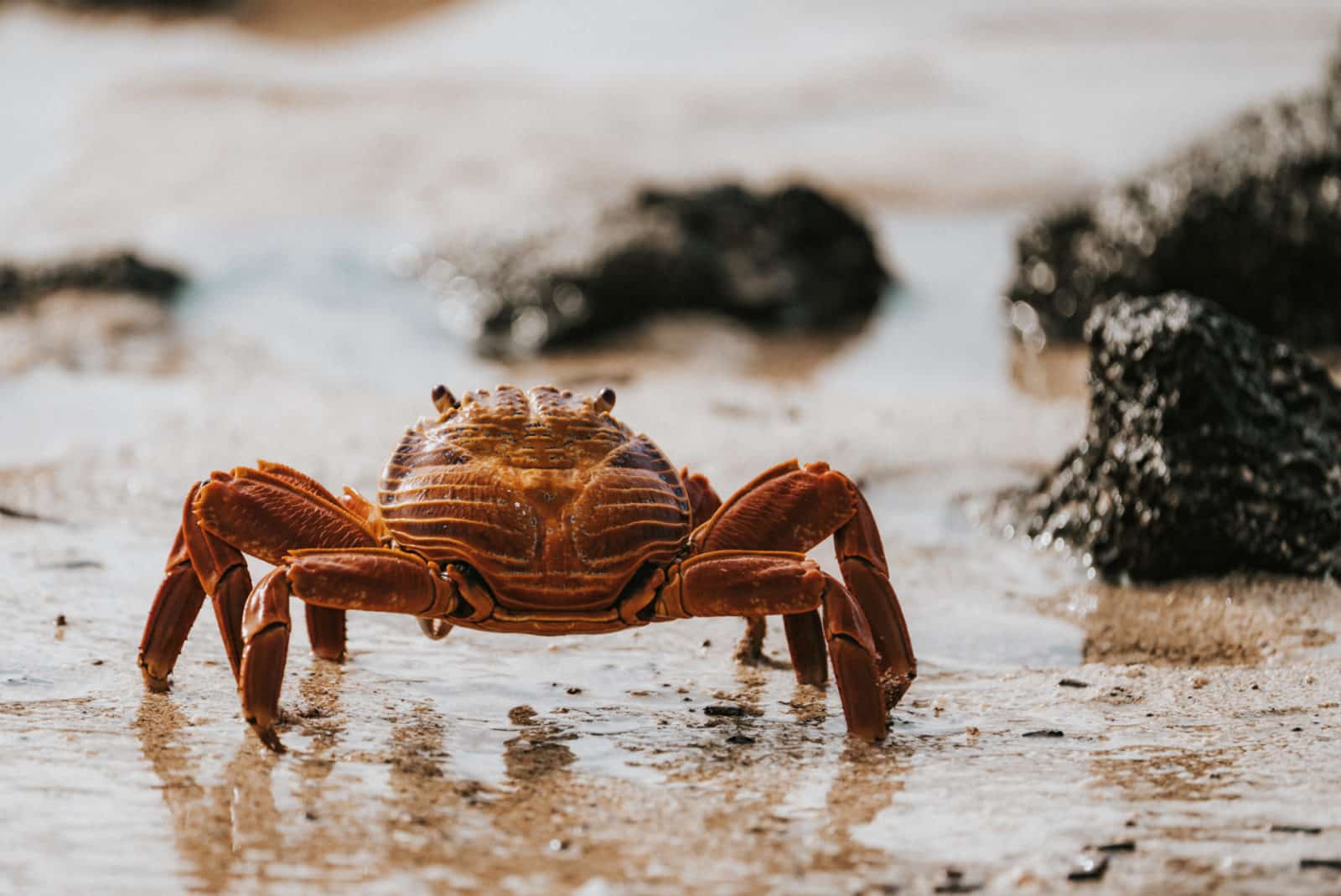 Galapagos Sally Lightfoot Crab
Galapagos Sally Lightfoot Crab
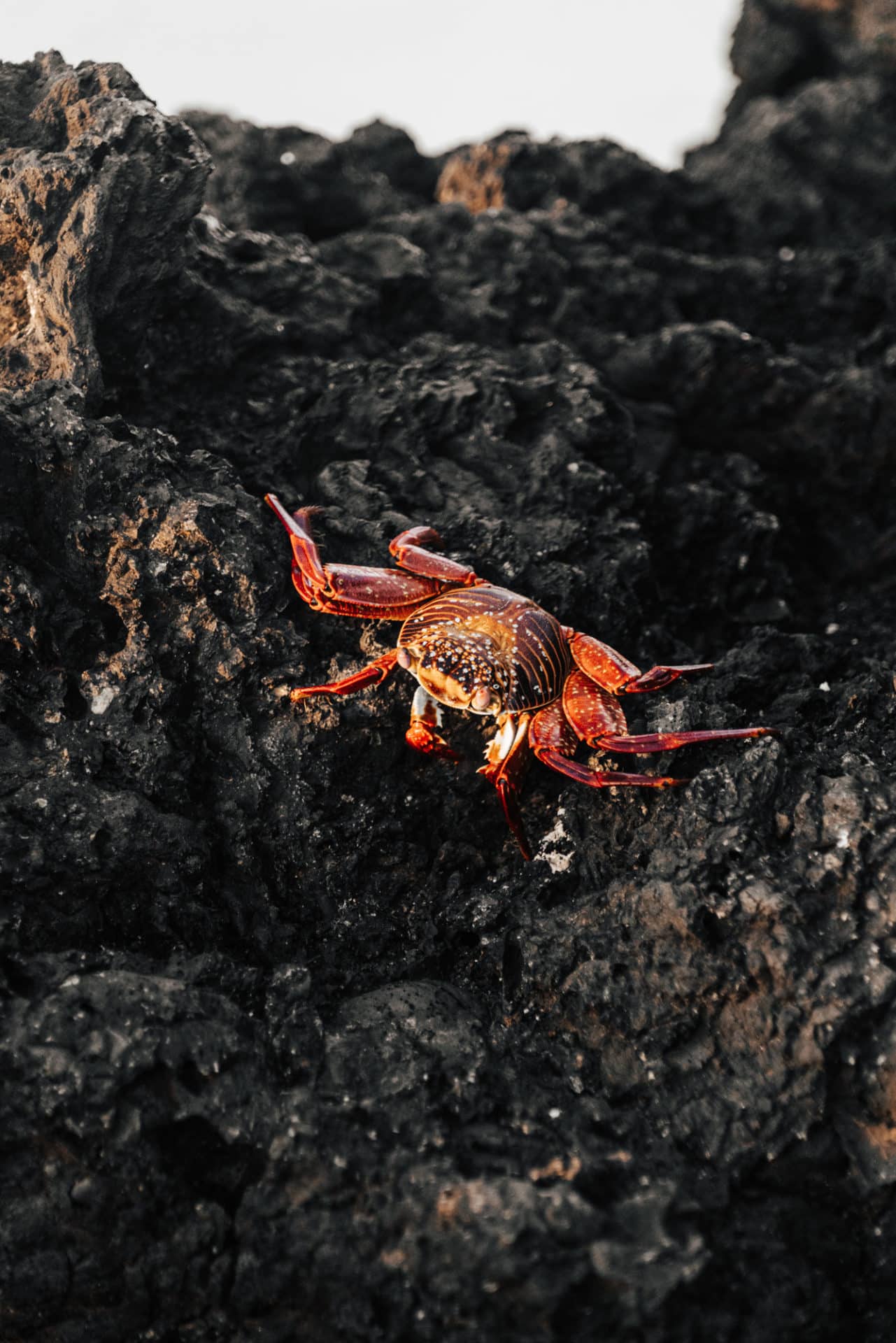 Sally lightfoot crab on Isabela island
Sally lightfoot crab on Isabela island
Have you ever been fortunate sufficient to see any of those distinctive Galapagos Islands animals?



